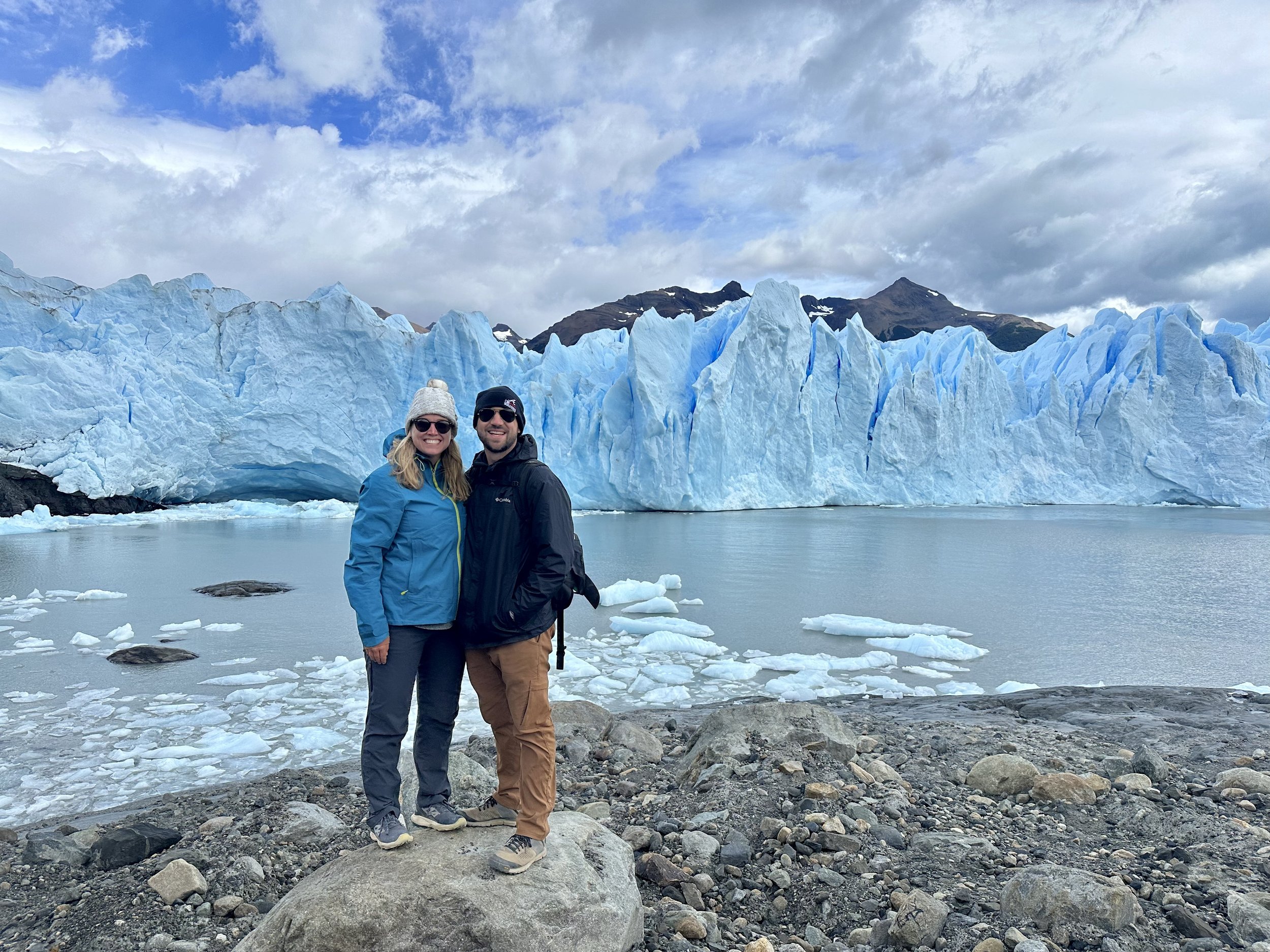El Calafate, Argentina
El Calafate (cal-uh-fah-te) and El Chalten (shall-ten) are the main towns in the Argentinian section of Patagonia. They sit on separate glacial lakes that are both among the largest in all of Argentina. Both places take advantage of their incredible location and offer all sorts of adventure activities; hiking, kayaking, mountain climbing, cycling, boat rides, and even walking on a glacier. We were excited to get back to Argentina after our wonderful time in Mendoza and wow, did El Calafate and El Chalten not disappoint. We were blown away by the natural landscapes and bustling atmosphere of the mountain towns and, everyone say it with me now, we can’t wait to come back to visit.
El Calafate is the bigger of the two towns and is closer to Torres Del Paine so it was our first stop after the W trek. The biggest draw of El Calafate is the Perito Moreno Glacier. The Perito Moreno glacier is one of 39 glaciers in the Southern Patagonia Ice Field. The Southern Patagonia Ice Field is the third largest deposit of freshwater in the world, after Antarctica and Greenland. The glacier is one of the few in the world that is still expanding; geologists aren’t exactly sure why. Perito Moreno Glacier is about an hour drive from El Calafate.
We signed up to do the Big Ice Trekking where you actually get to walk out on top of the glacier! The tour starts at an observation deck on a hill at the foot of the glacier. There are walking paths all along the hill giving you great views of the edge of the glacier and up into the glacial valley that it flows from. The glacier is huge; it’s over 3km wide and 19km long. At some points along the glacier it is over 700m thick! The wall of the glacier that we could see from the viewpoint (the edge where it calves into Lago Argentina) is between 50 and 70 meters tall and if you are lucky you can catch a huge chunk of ice falling off into the water.

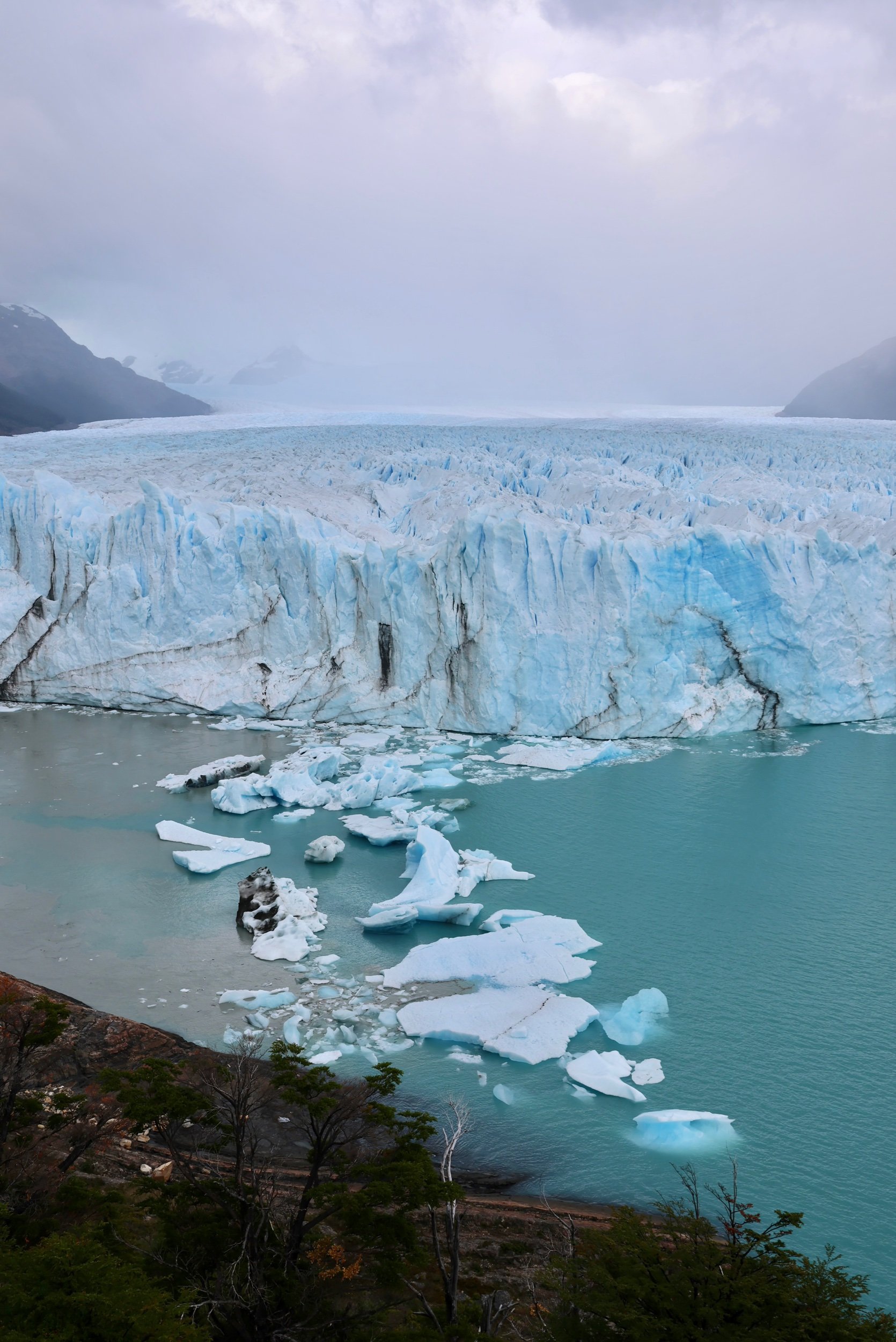

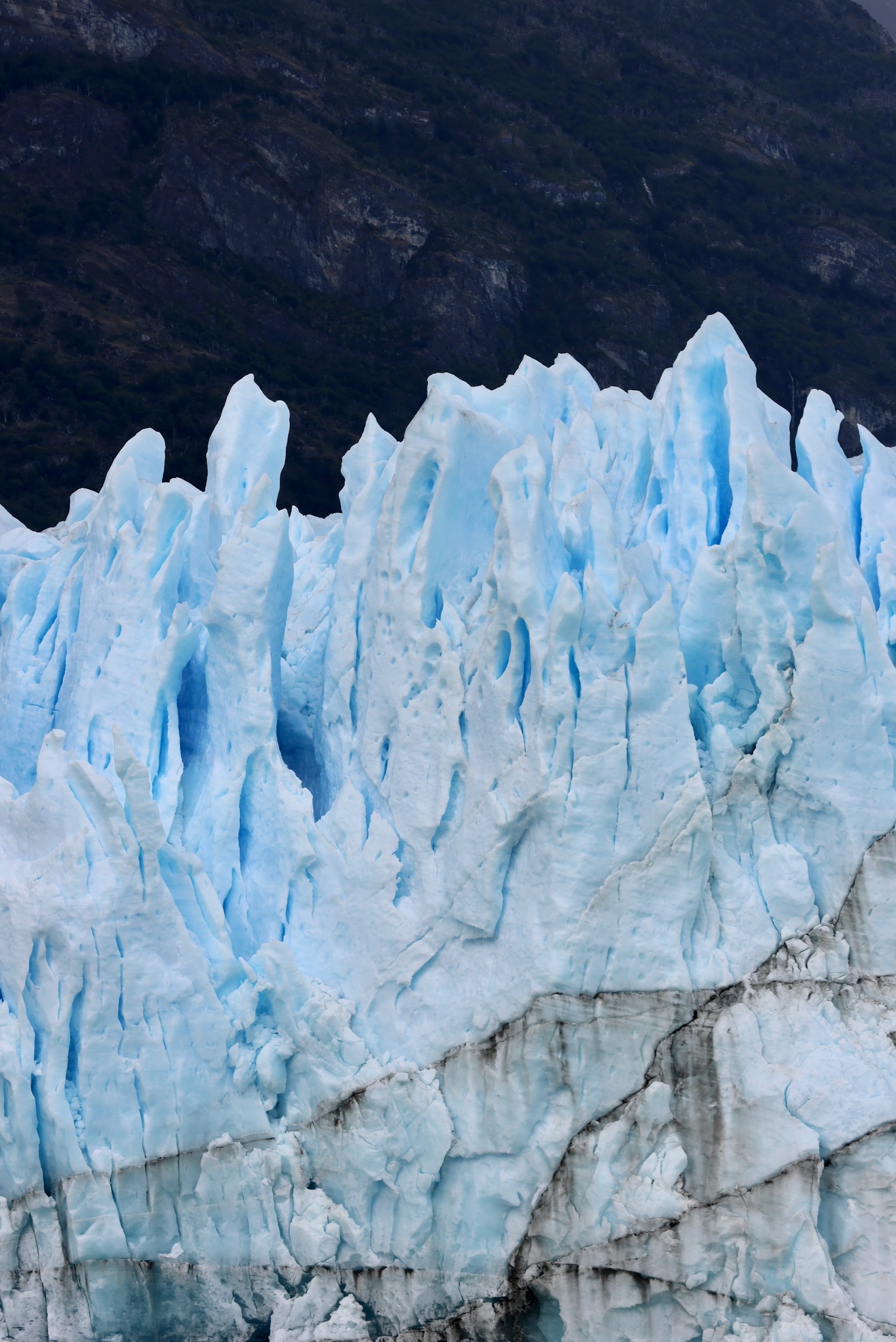
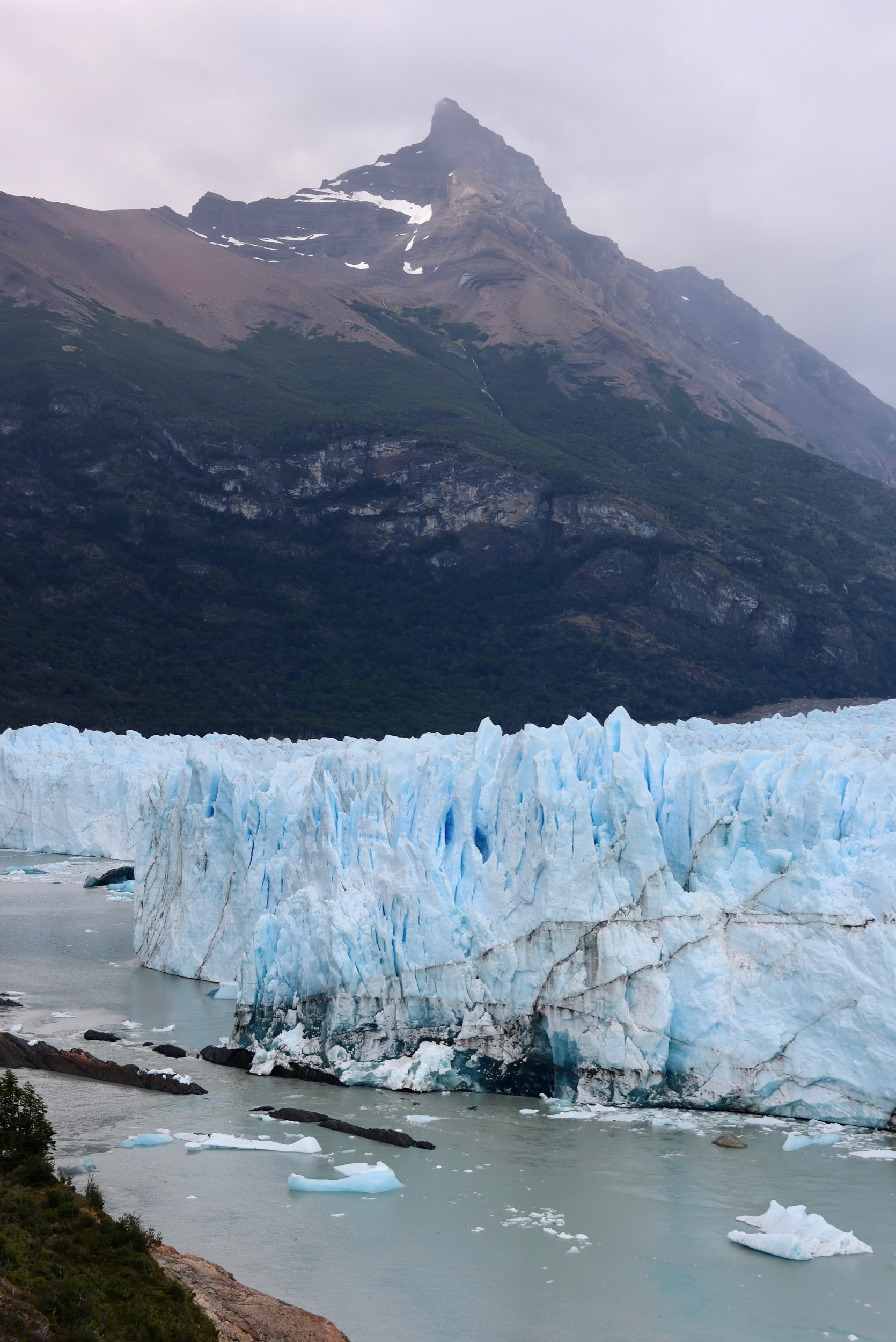

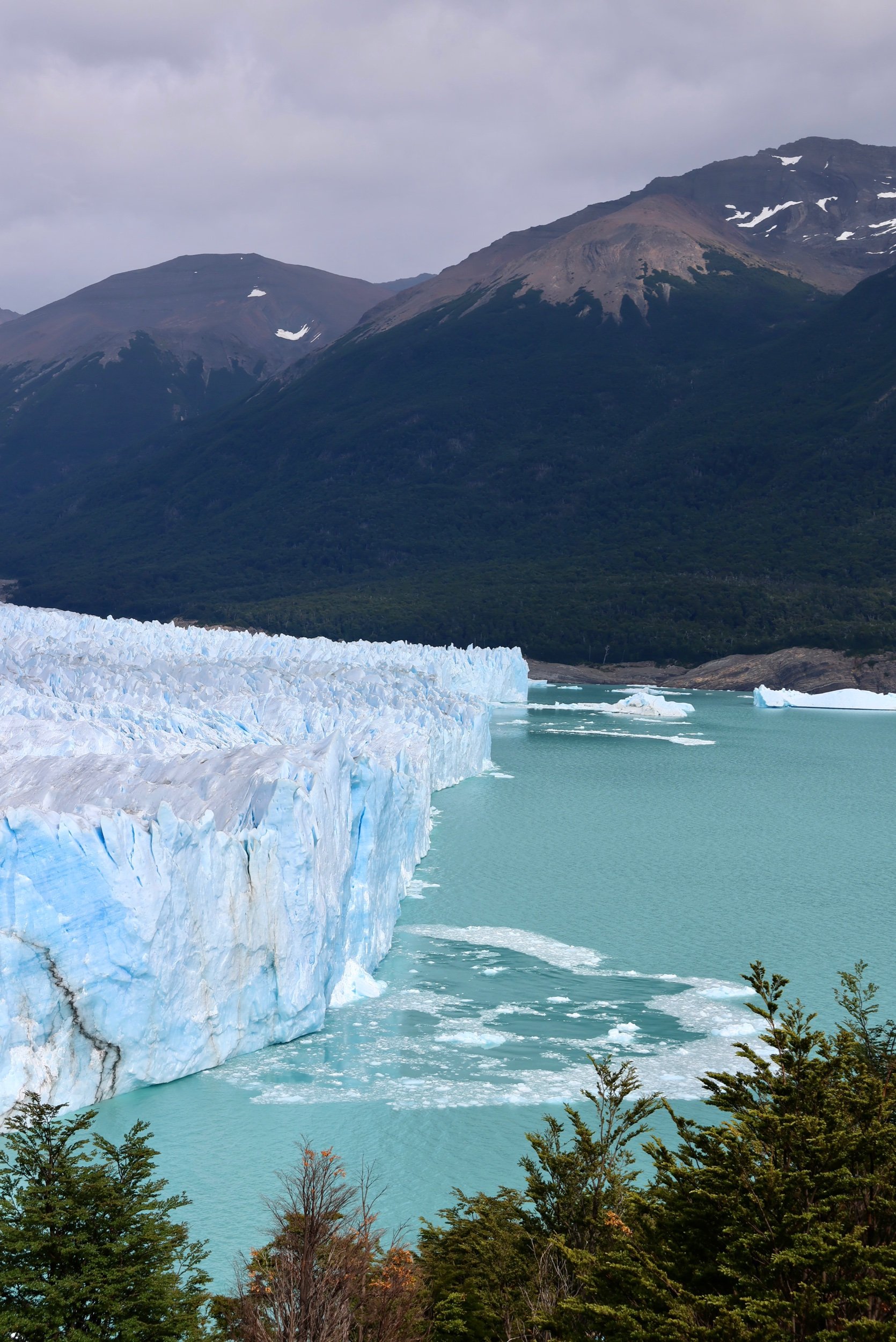
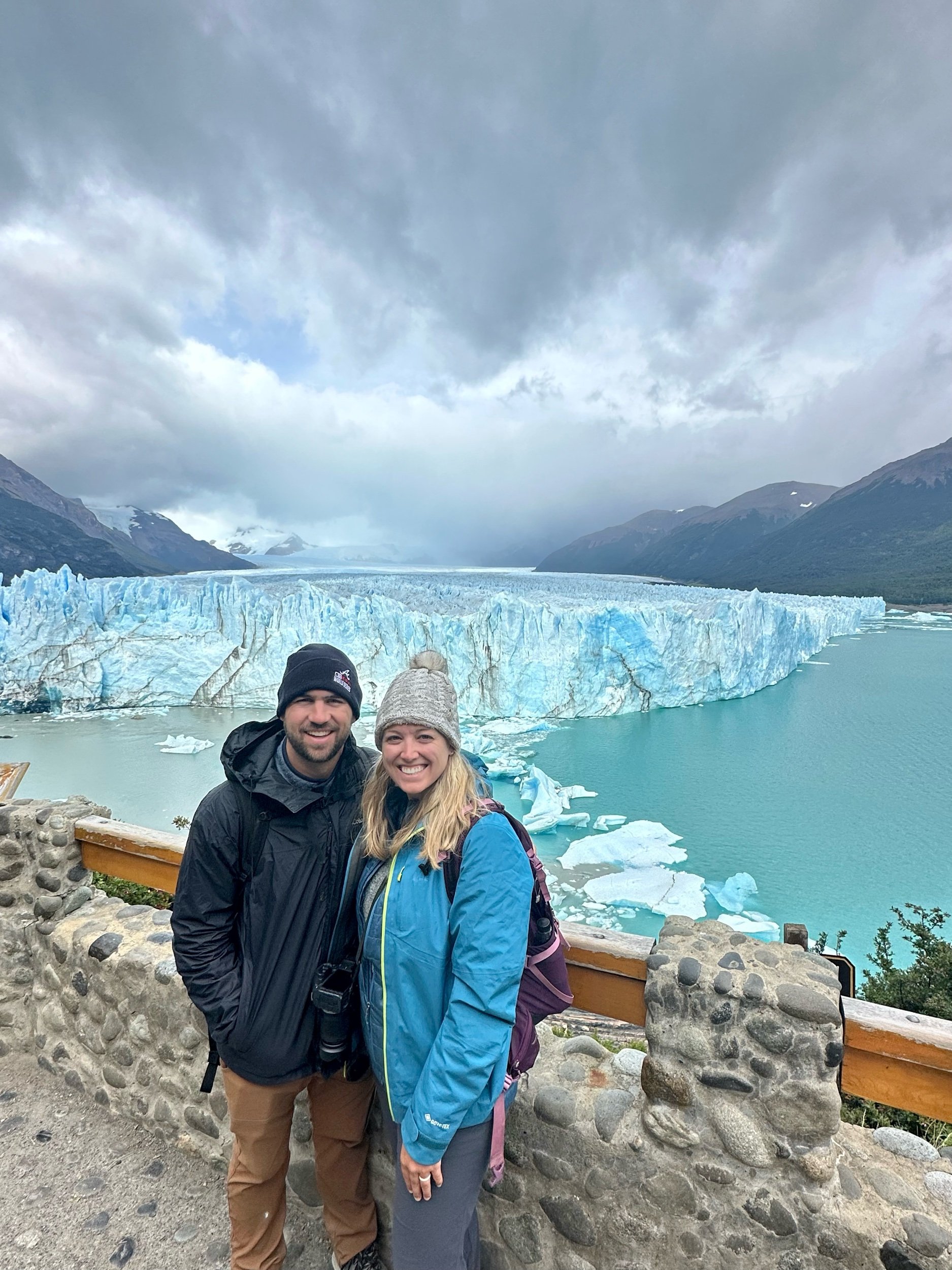
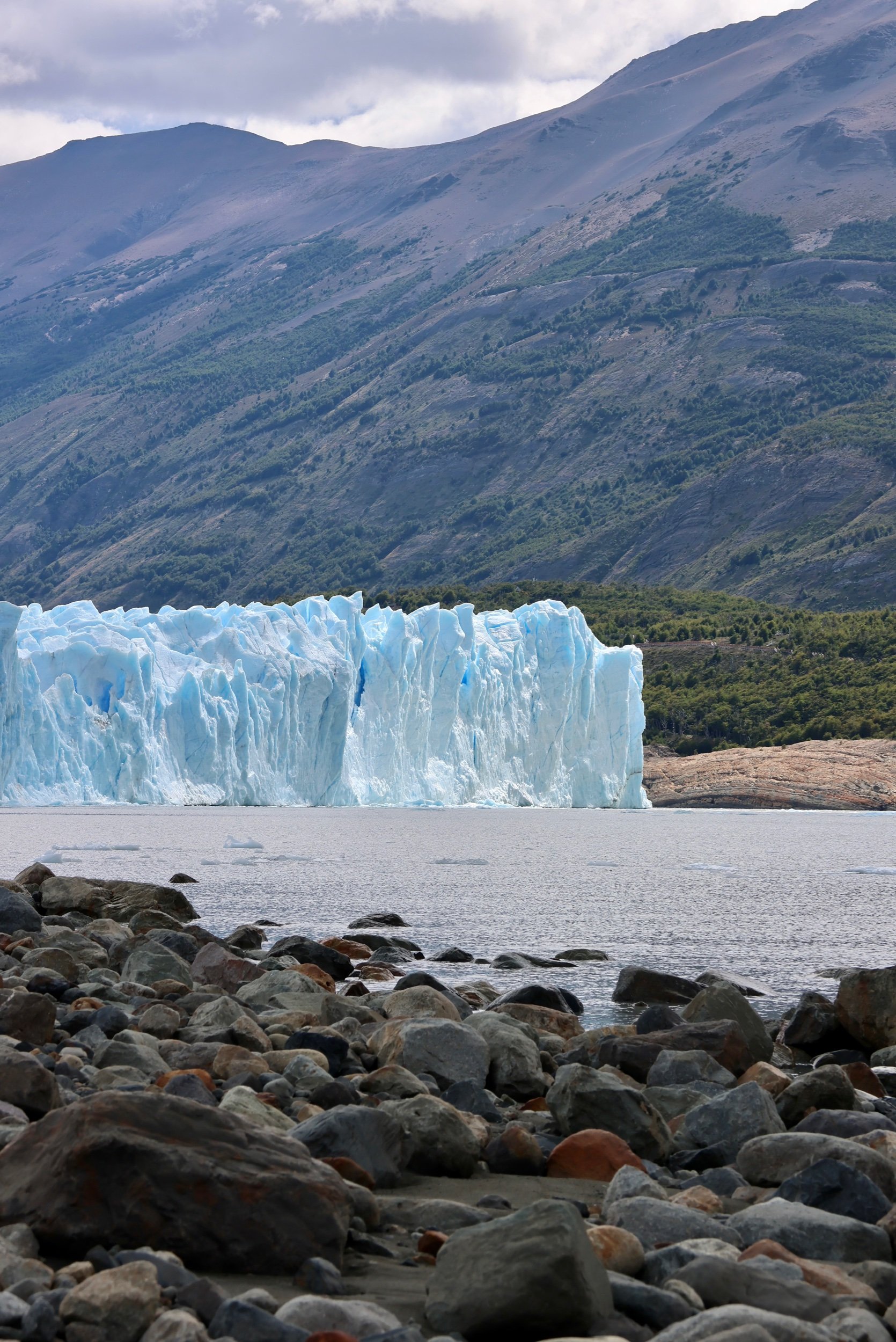
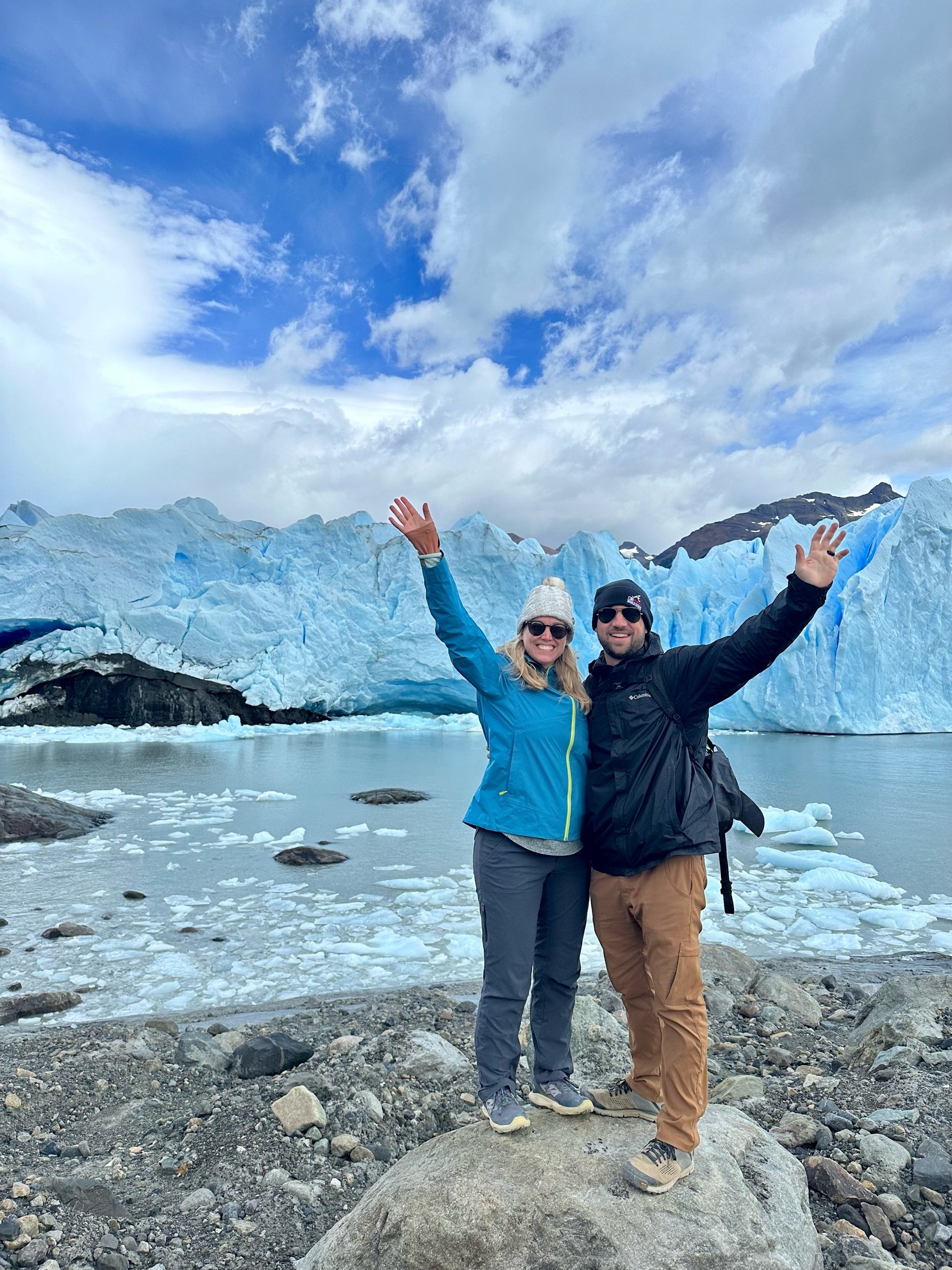
Every couple of years the glacier expands so far it runs into the hill the viewing platform is on. This causes part of the glacial lake to be cut off. The water on this side of the lake has nowhere to drain and over 2-3 years it rises 20-30 meters! The increased pressure allows the water to find a way out underneath the ice that is damming it up. The tunnel created by the water draining from the higher side gets bigger and bigger over time until it forms a natural bridge through the glacier. The tunnel through bridge grows over a couple of weeks as sections of the roof collapse into the water below. Eventually the the entire structure collapses in a huge crash. The last bridge was in 2021 so we didn’t get to see it (picture below is from google) and I’m not sure how well we explained it just now so you should definitely go watch it on YouTube to see what I mean.
After exploring the view points across from the glacier, we boarded the ferry to cross the lake and walk out on to the glacier. We started walking along the side of the glacier on the hillside. We were able to explore an ice cave that had been exposed near the edge of the glacier. It was about 20 feet deep and 10 feet tall; it had a beautiful deep blue hue all around. Glaciers get their signature blue tint from the lack of air in the ice; the glacier is so heavy that it squeezes all the air bubbles out of the ice over time.
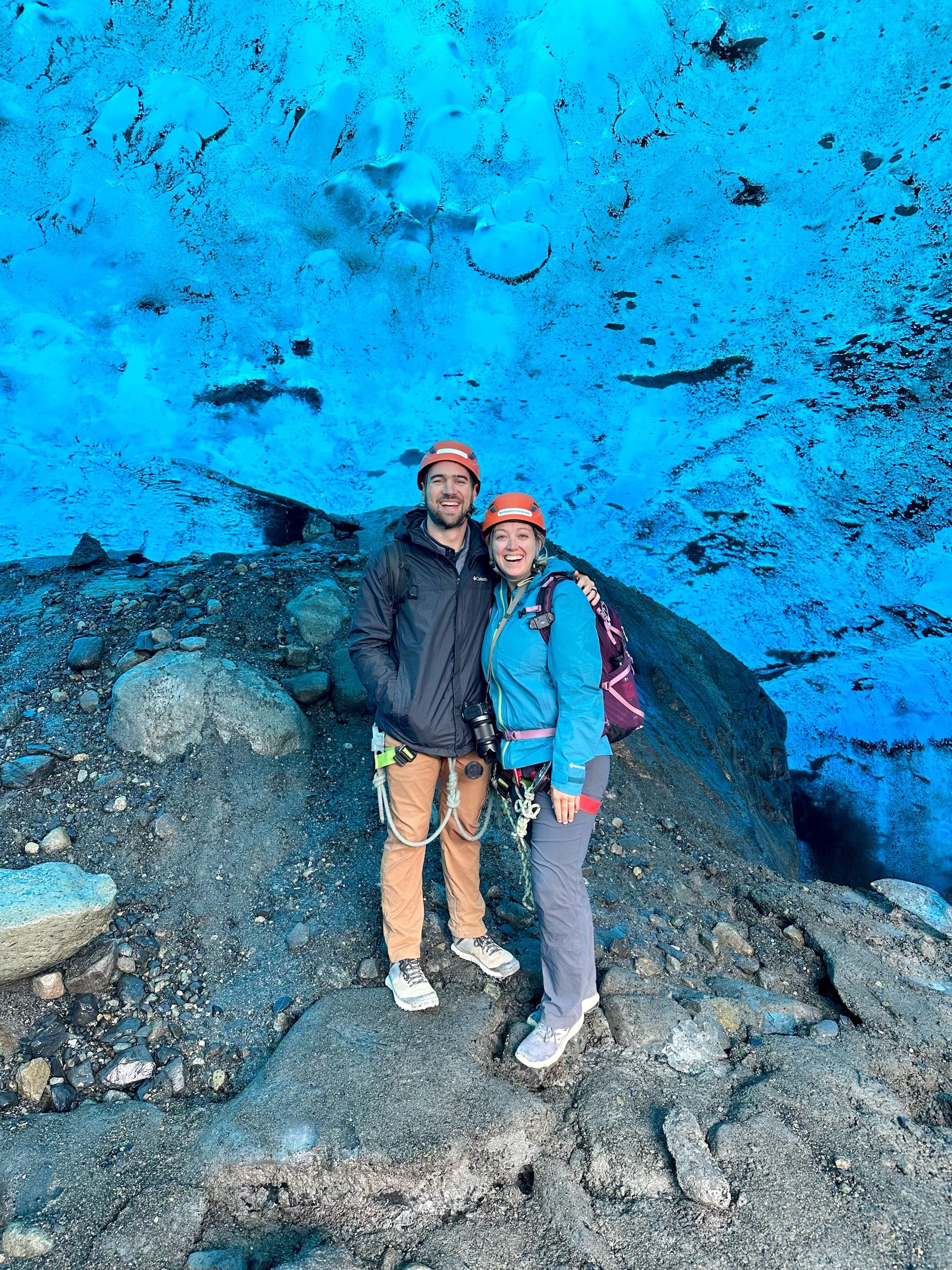
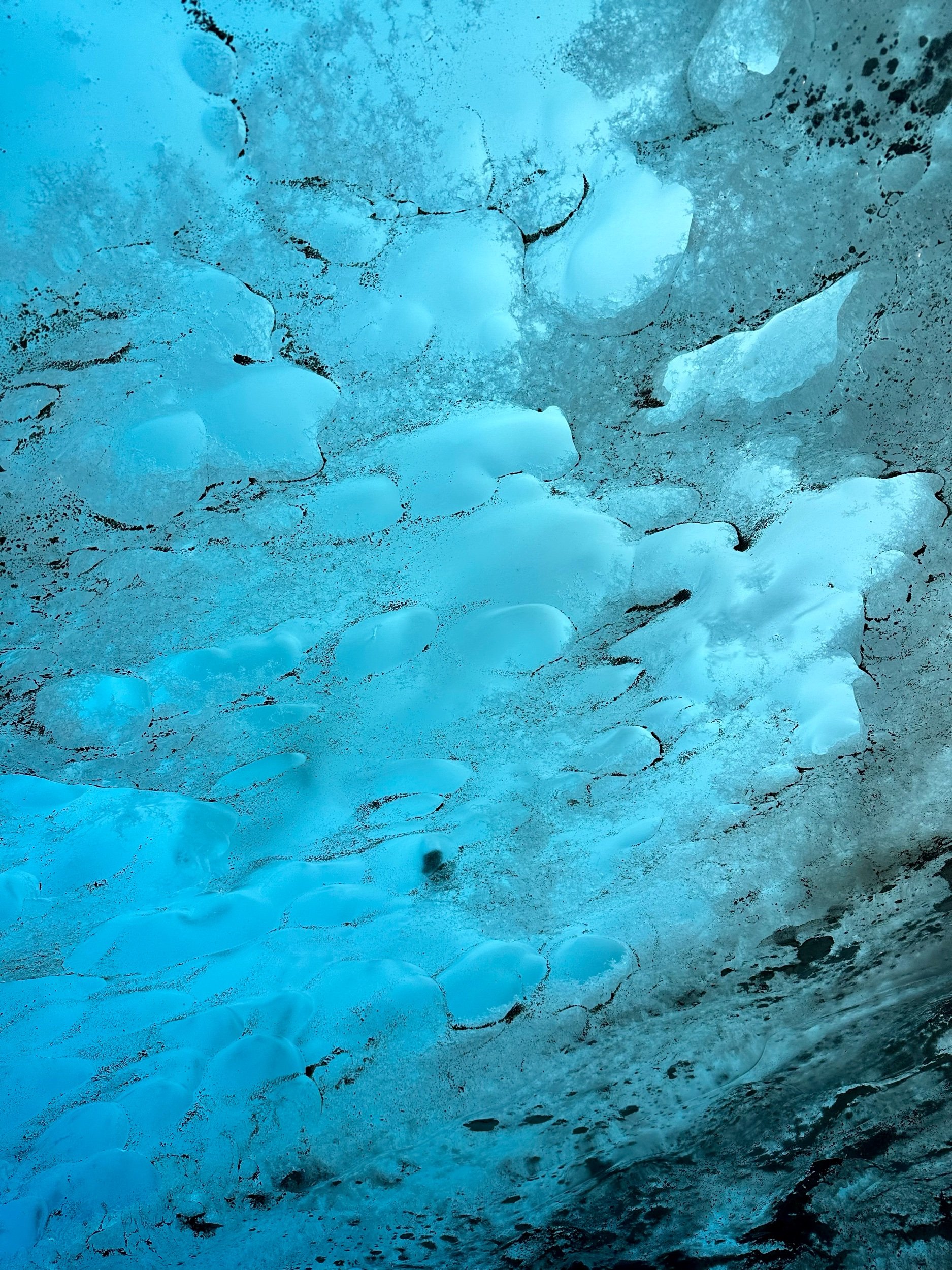
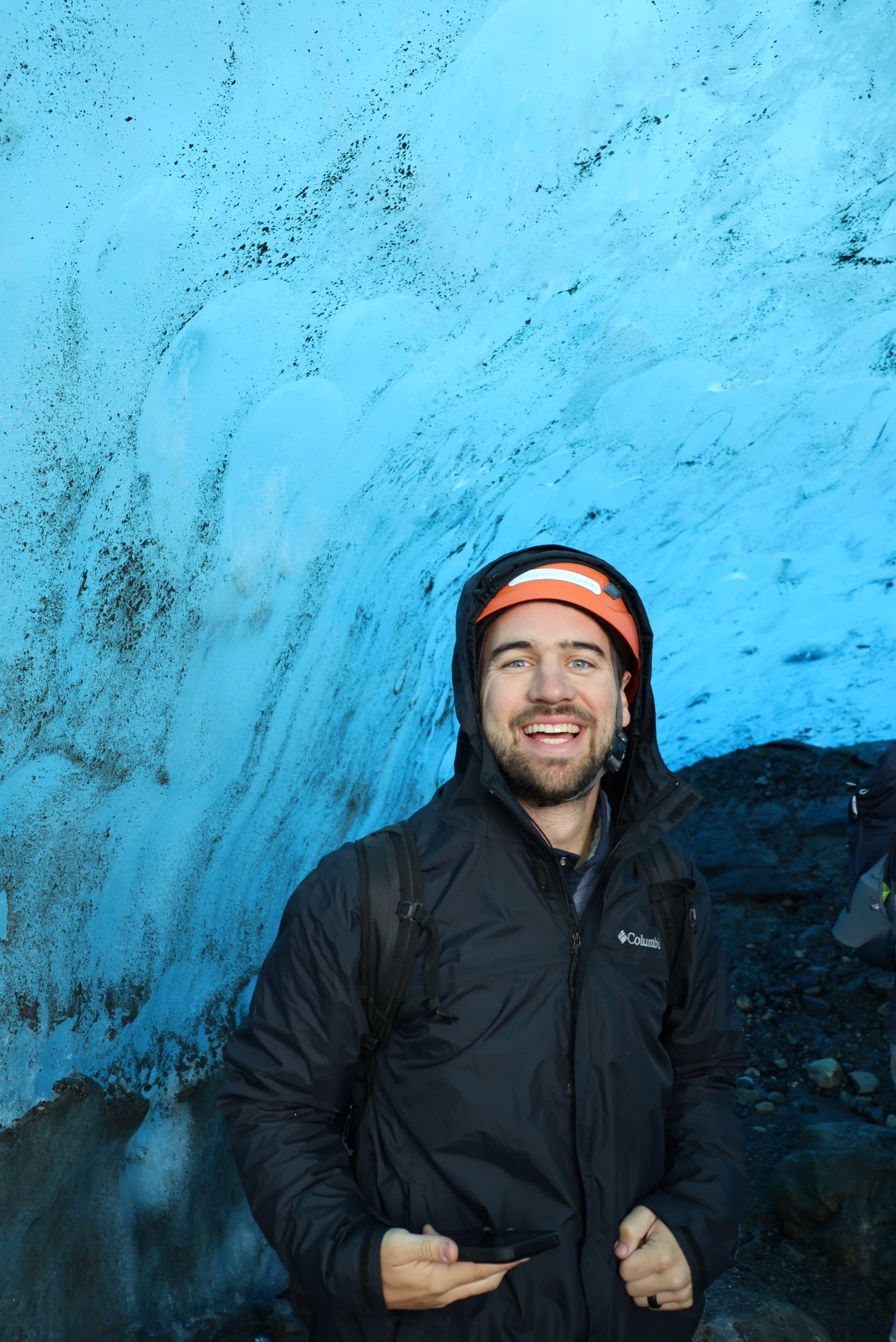
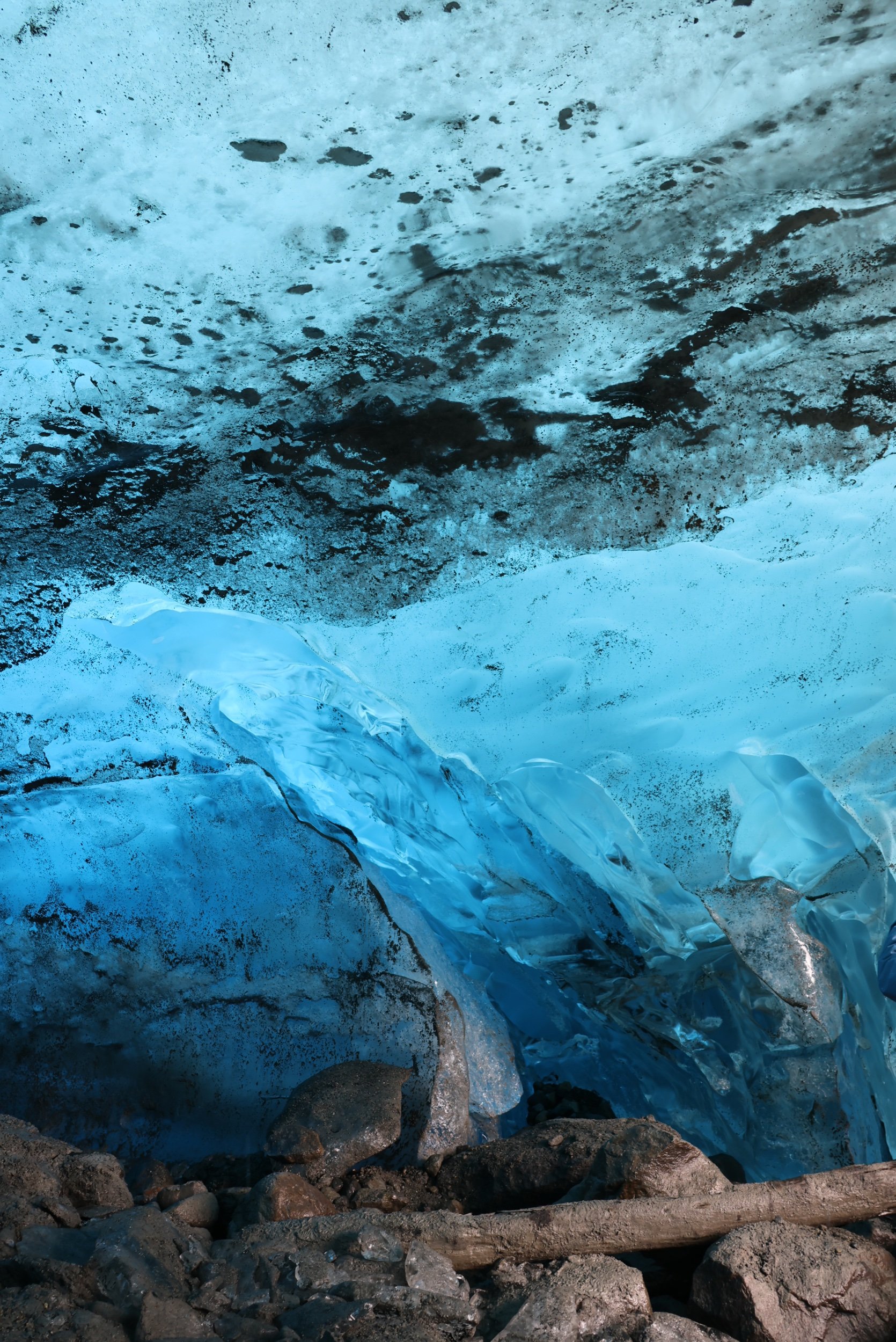
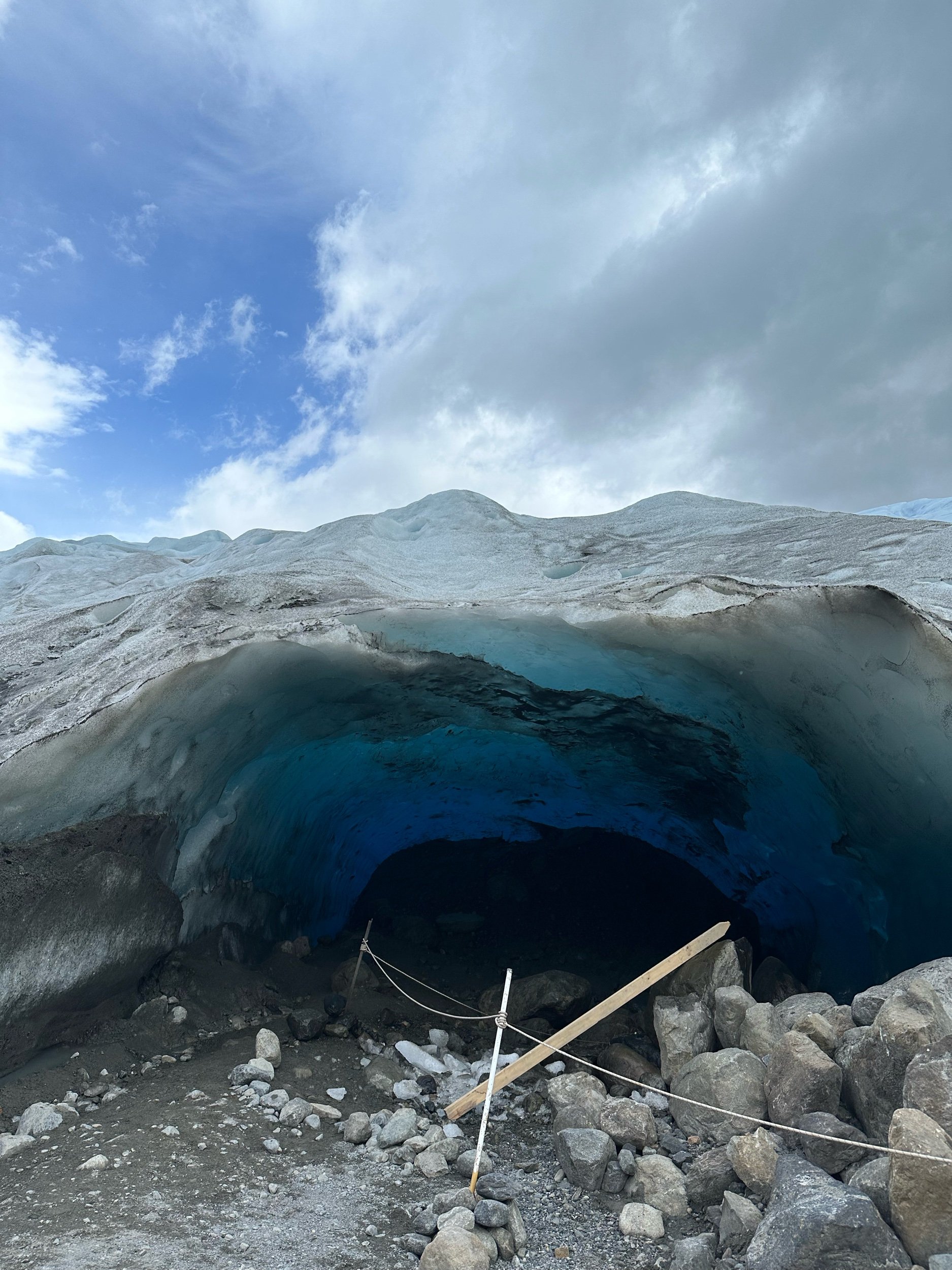
To get to our section of the glacier, we had to walk along the steep sides of the glacial valley which ended up being a surprisingly strenuous 2km hike but we had some incredible views of the mountains surrounding the glacier, the glacier itself, as well as the vast glacier lake. Some of the sections were so steep or near an edge that we had to wear a harness and strap in to safety lines as we walked.

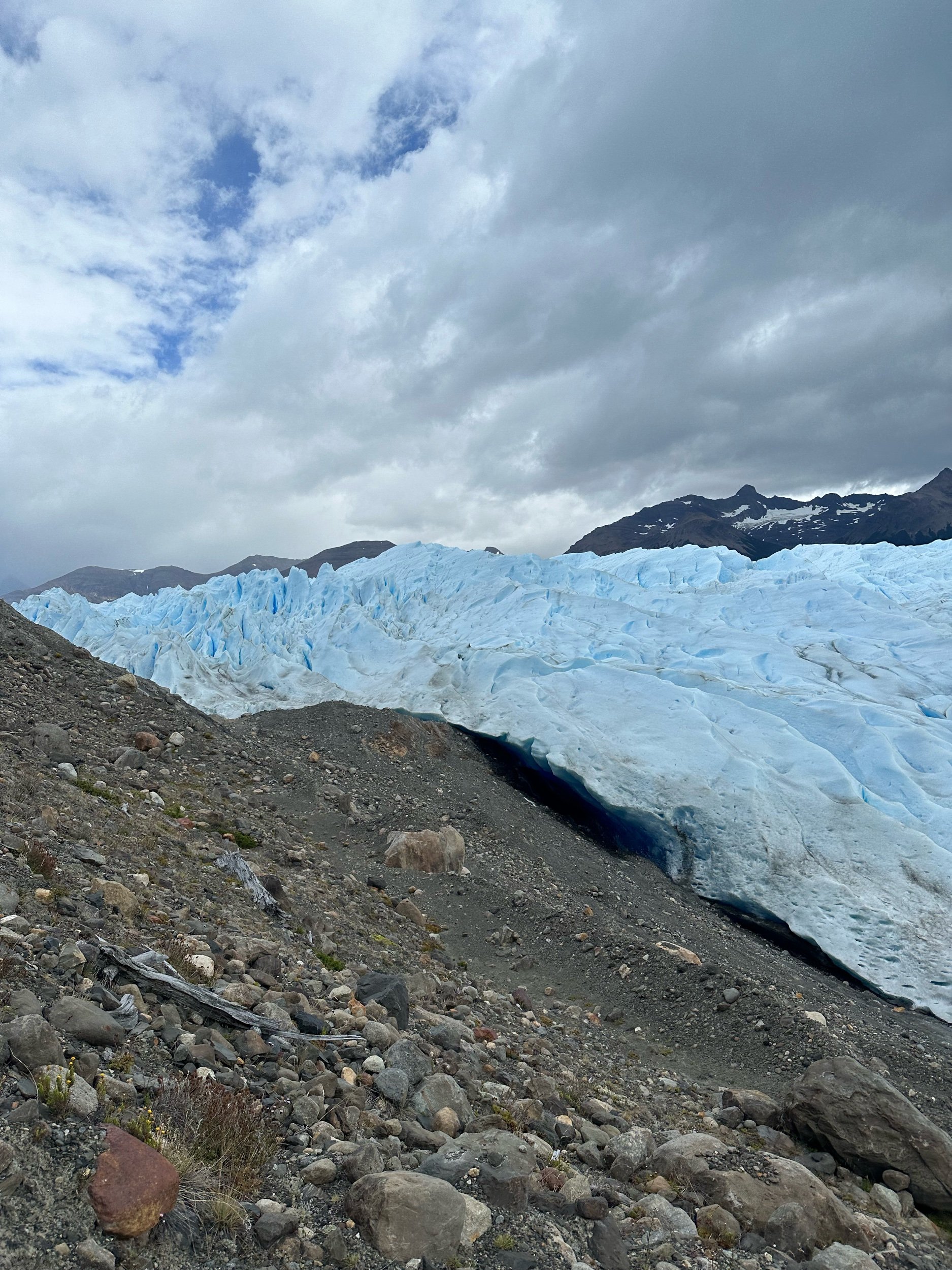

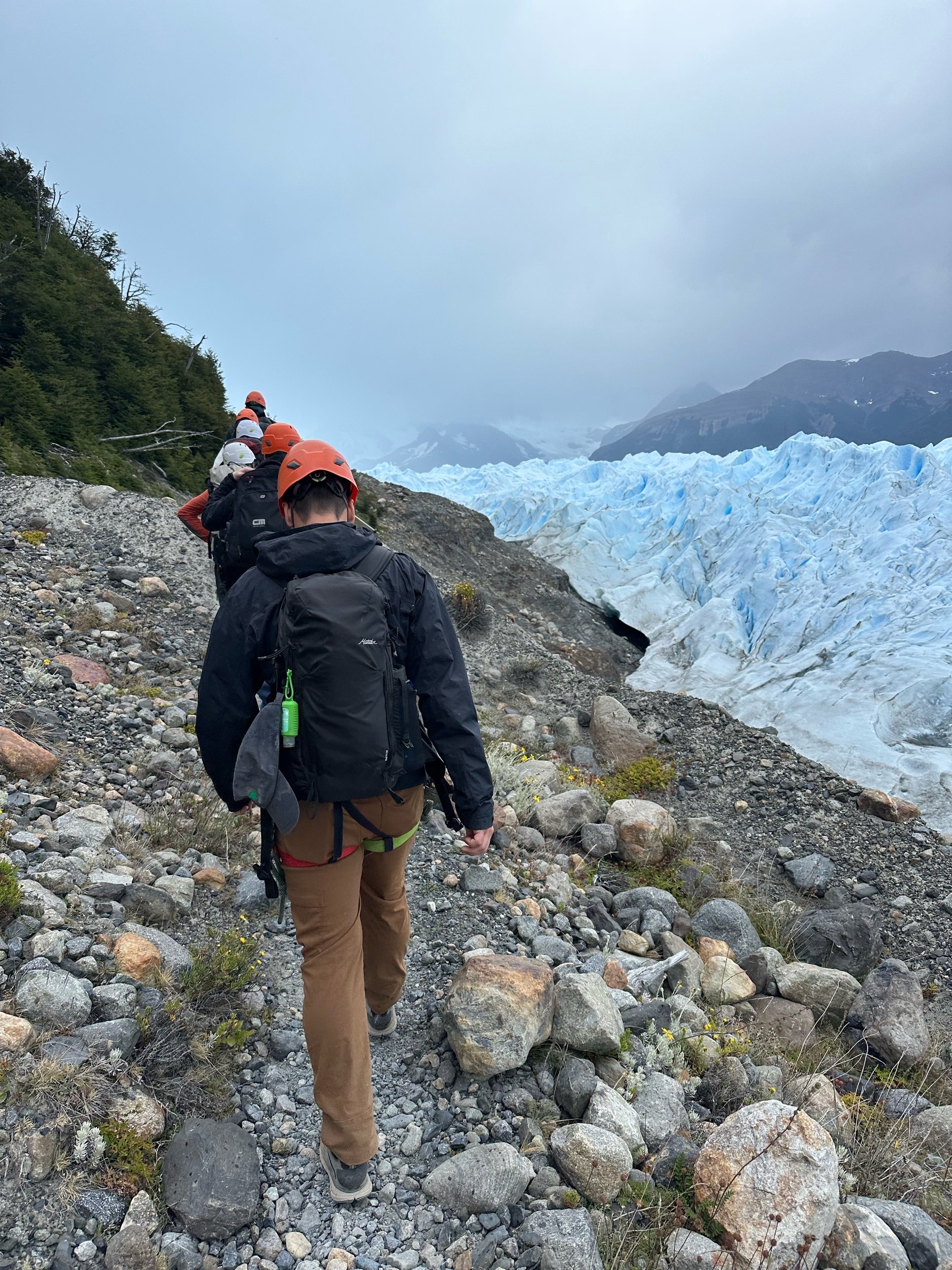
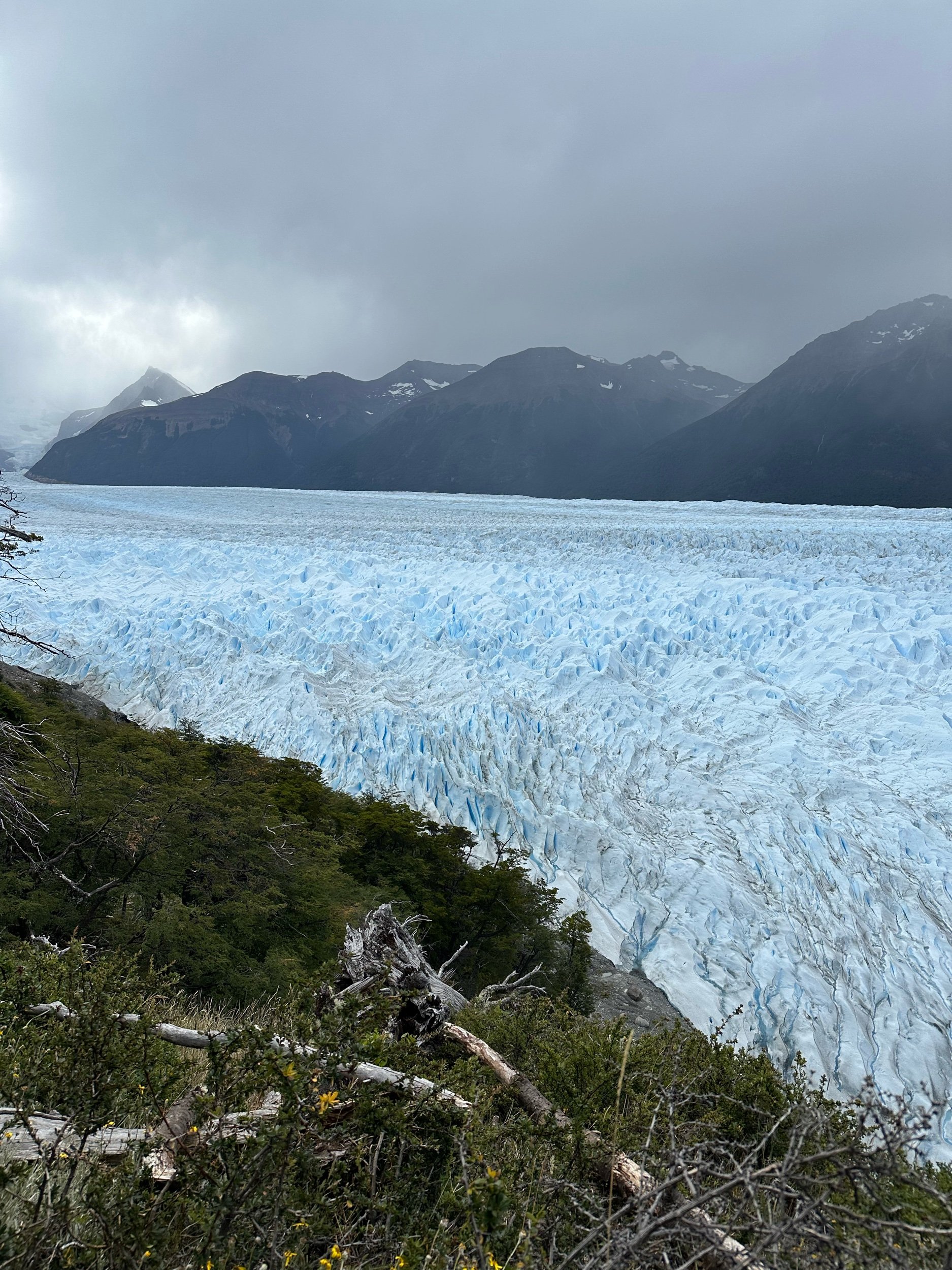
We made our way from the hillside down the glacier. There we put on our crampons (basically platform shoes made of ice picks so you can walk on the ice) and walked out on the ice. We were able to walk on the ice for almost 3 hours including a stop for lunch. We saw small rivers on the surface from melt water and pools of crystal clear water. The melt water carves amazing features into the ice including moulins, which are drainage holes that go straight down into the ice. Some of the moulins were wide enough for a person to fit in! We got close to the edge on some smaller ones and they went so far down you couldn’t the bottom. There were also large boulders on the surface that had fallen onto the glacier higher up in the mountains and had ridden the glacier down to where they currently sat.
We walked as far out on to the glacier as we could but had to stay near the edges of the glacier as the middle area is where most of the movement happens so the ice is much less stable and has more dangerous crevices. The middle part of the glacier can move as fast as 2m per day and builds up ice towers that are over 70m tall. Being that far out on the glacier was surreal - it felt like being on another planet. We didn’t even mind that it was lightly raining most of the time.
We made our way back to the ferry pickup at the edge of the glacier and once we got on the boat the crew served everyone some scotch whiskey with a large piece of fresh glacier ice!
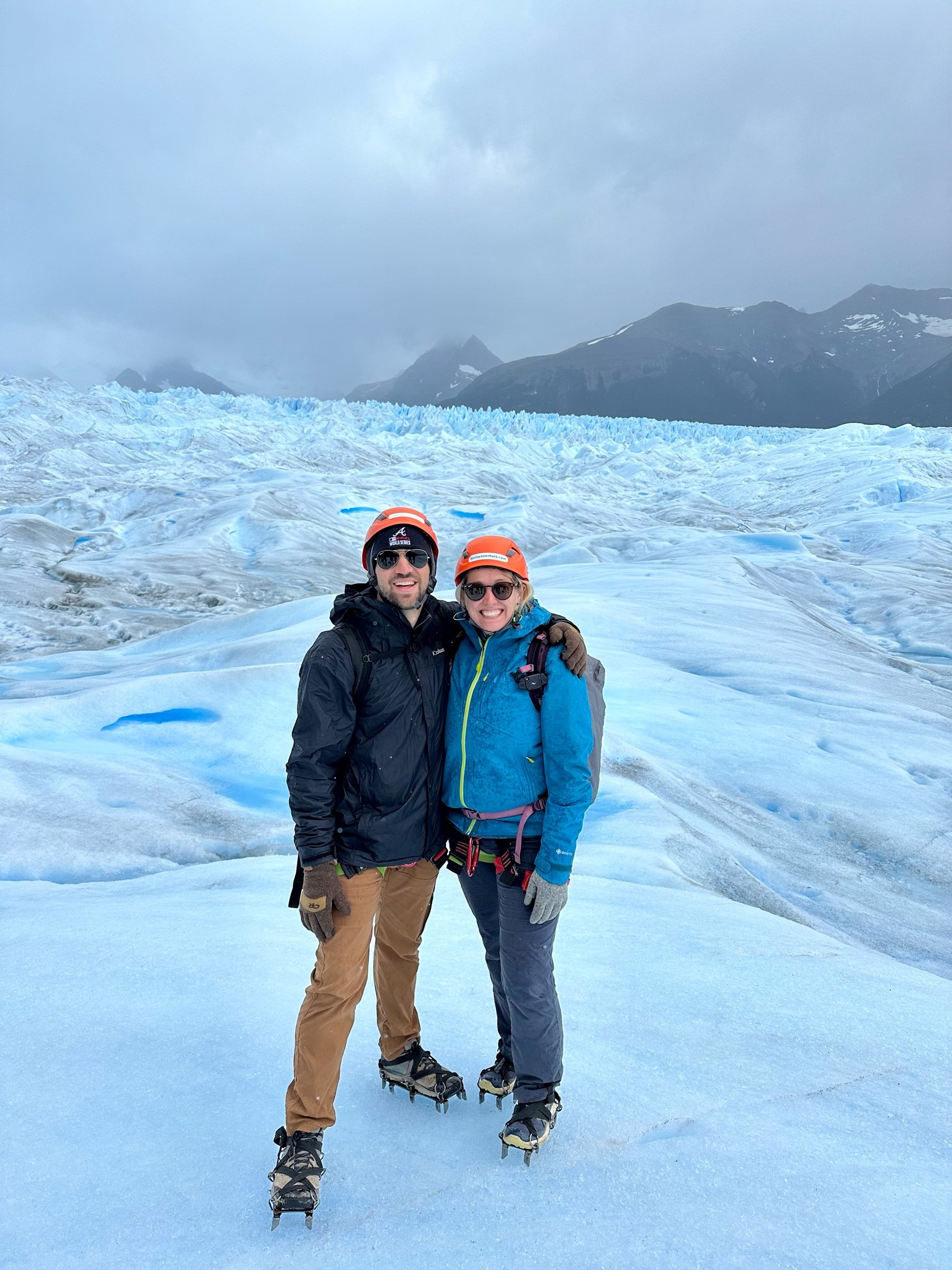

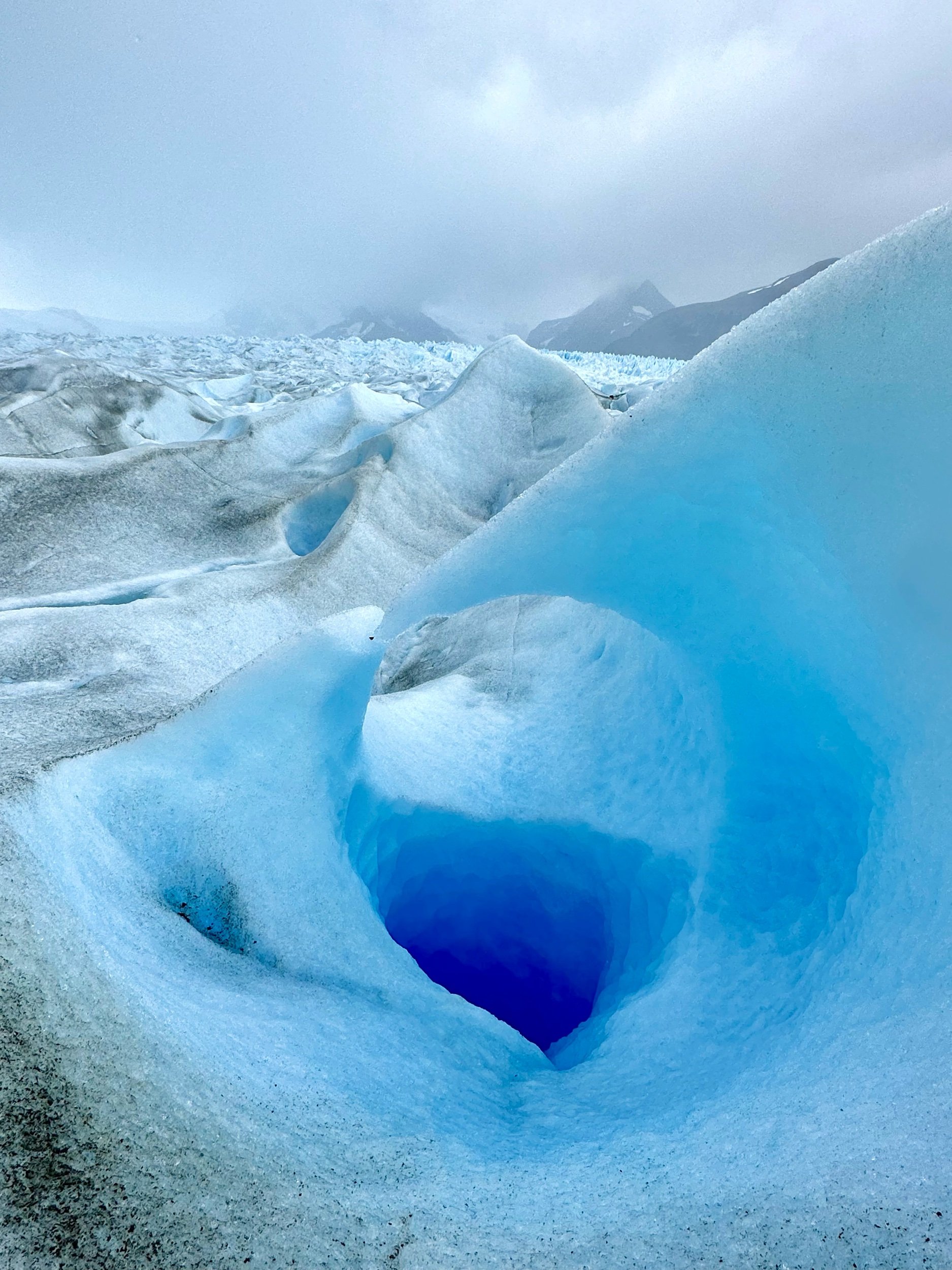
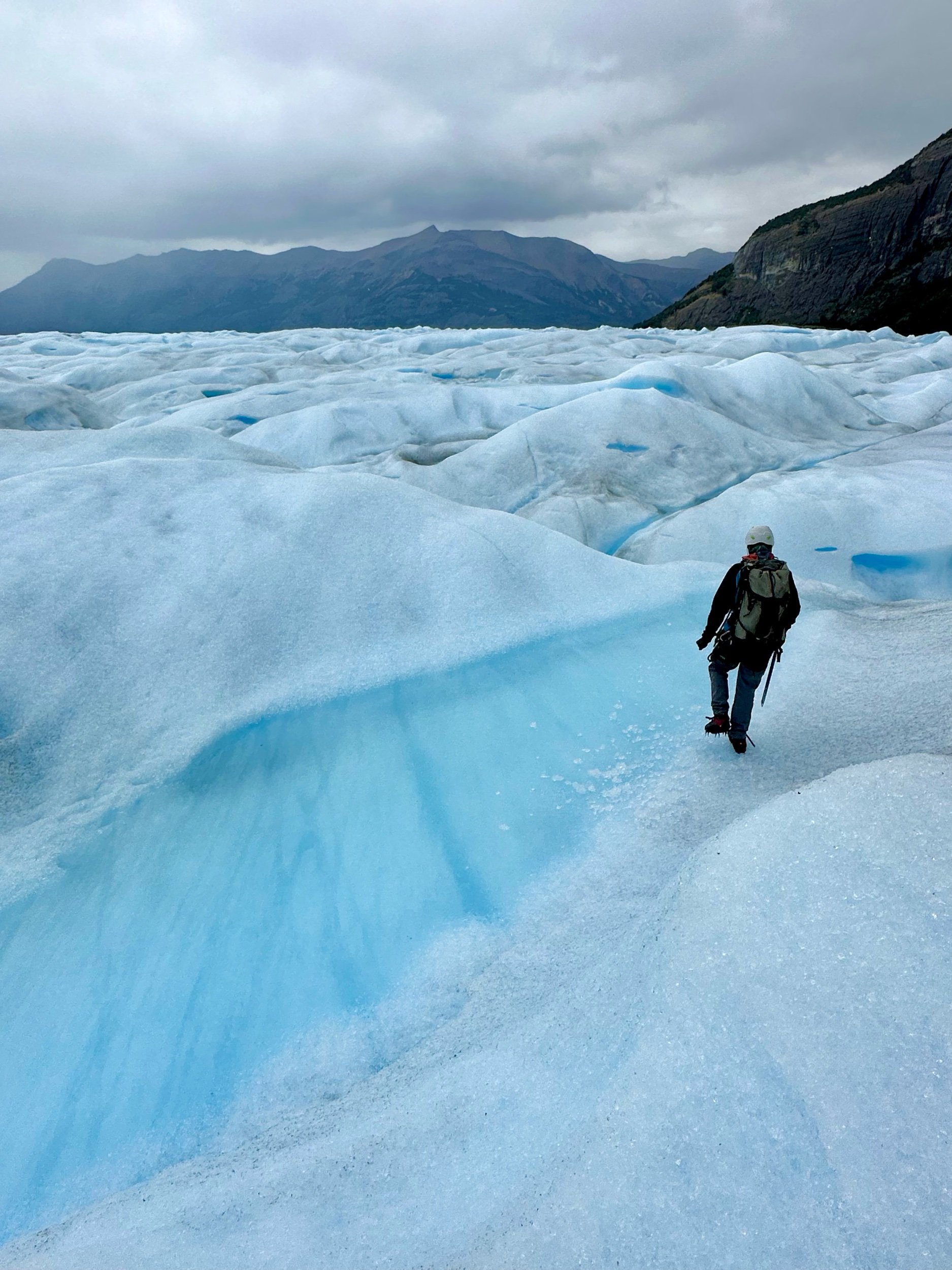
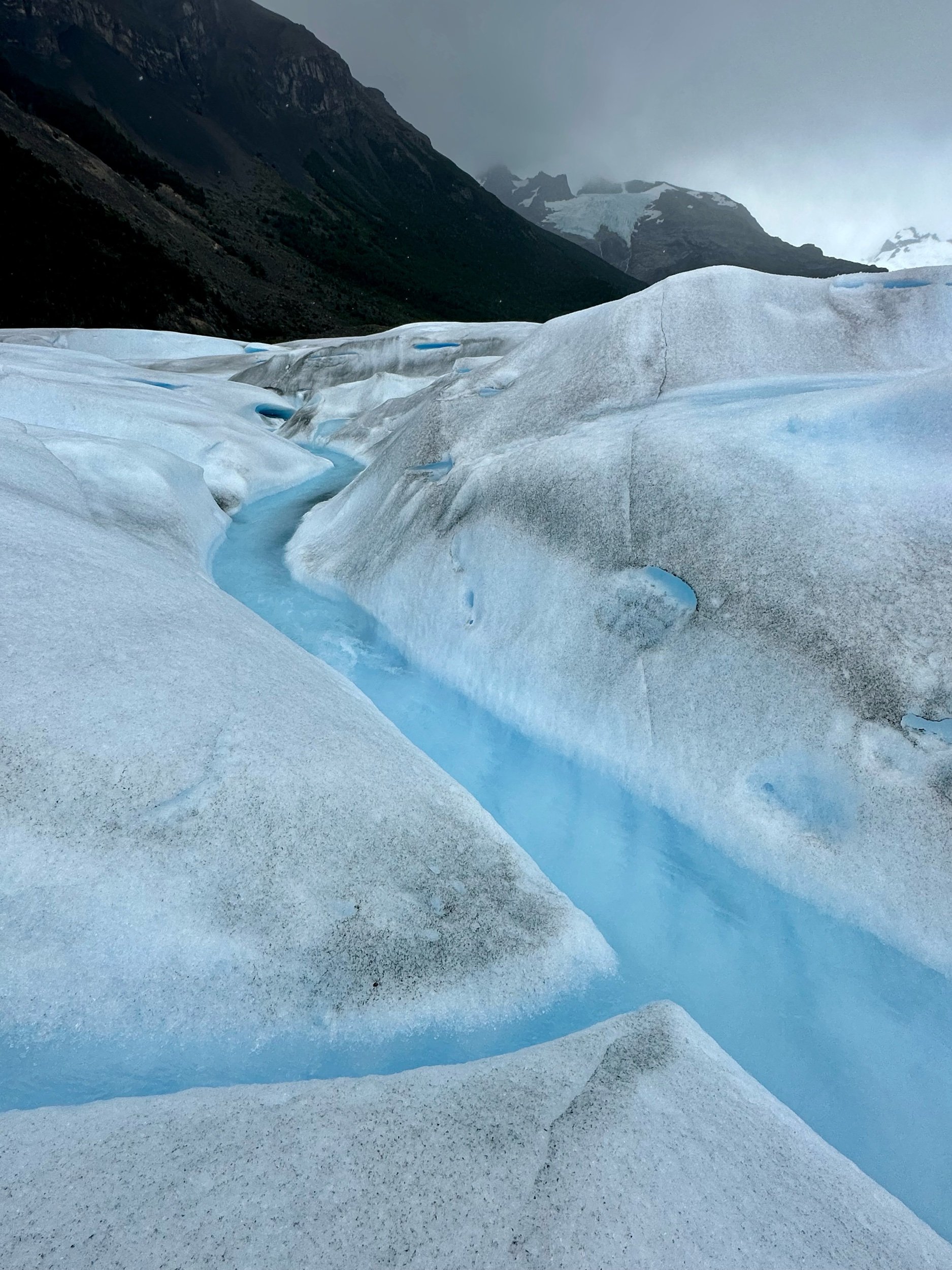
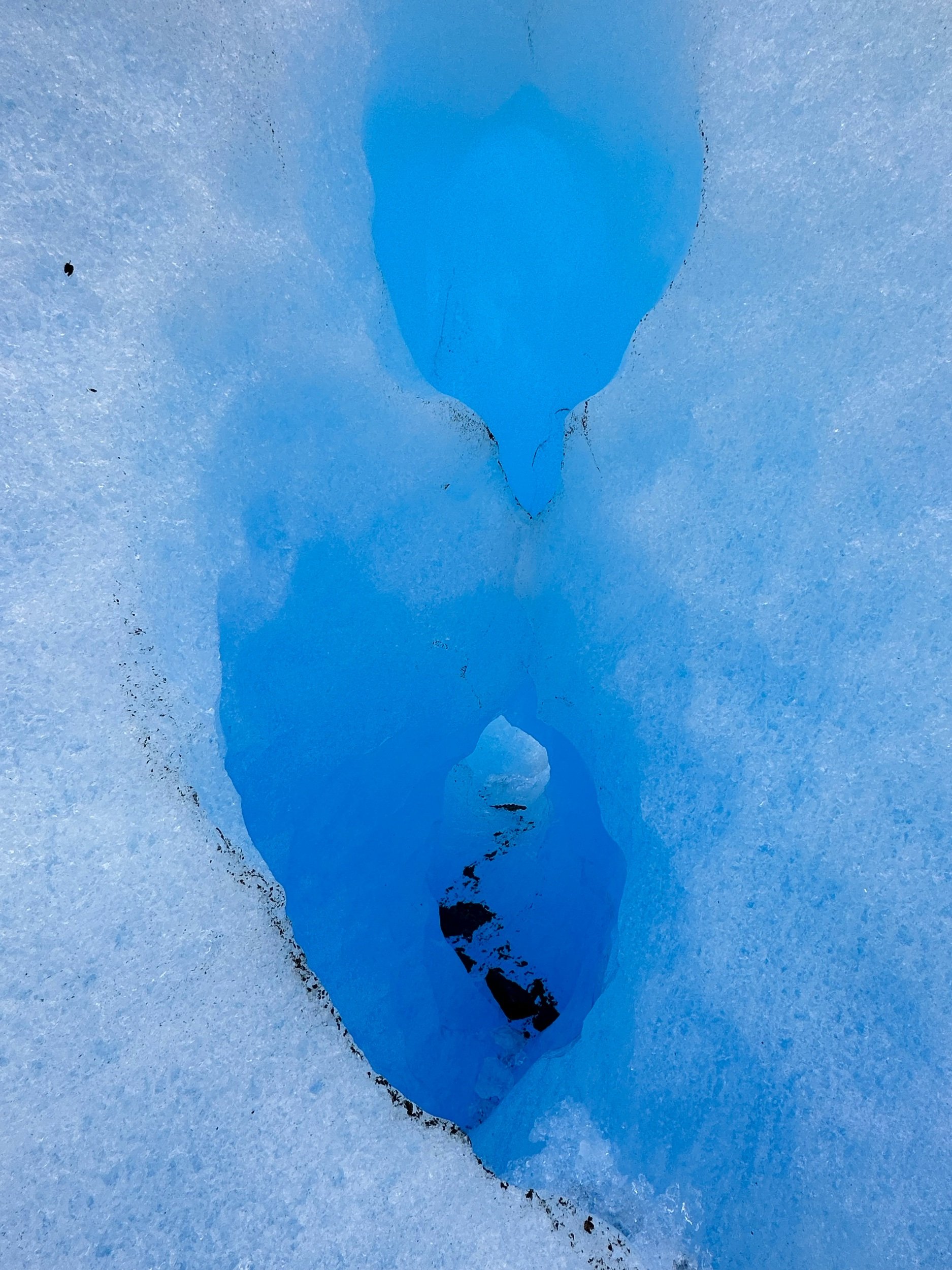
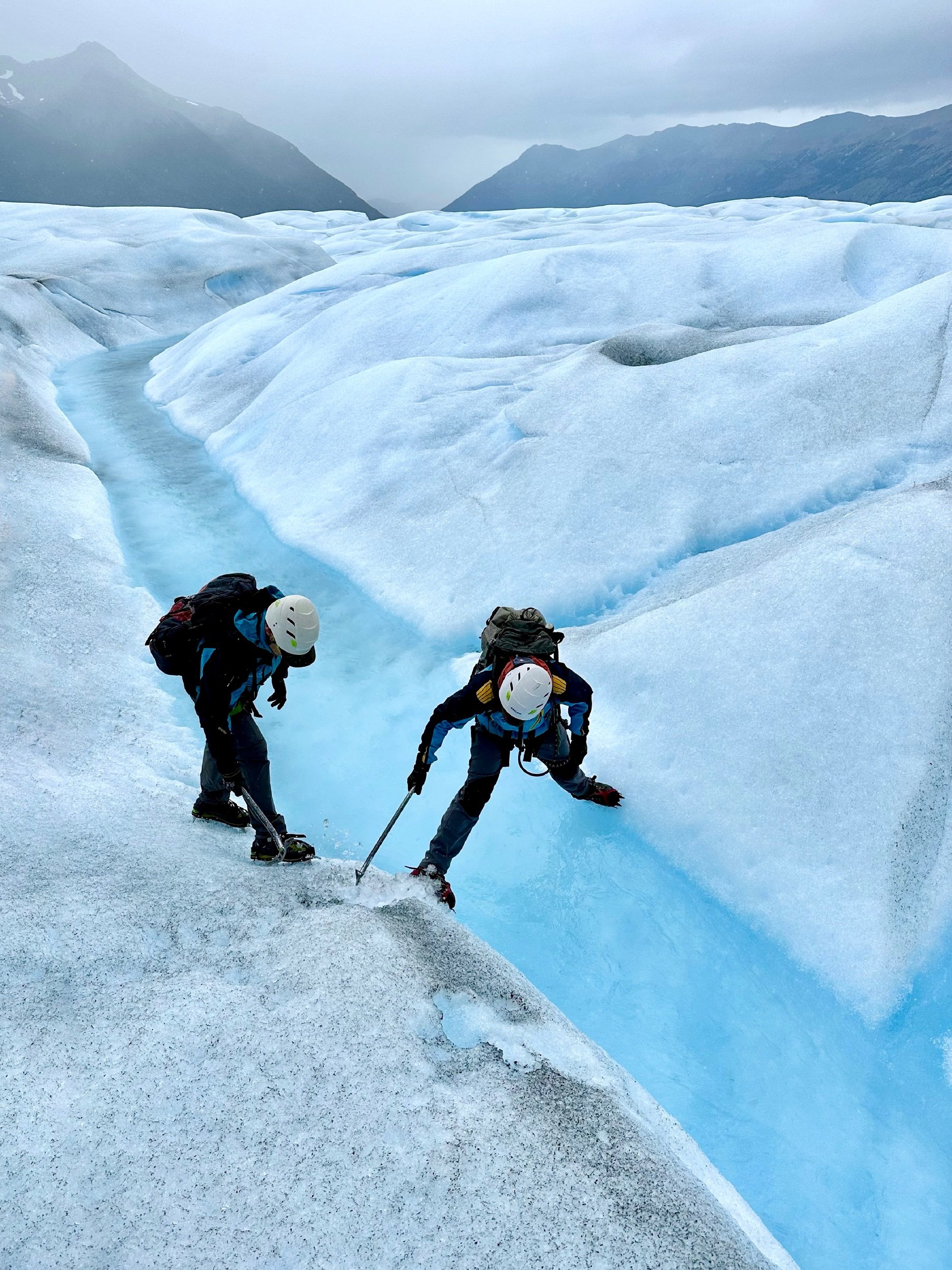
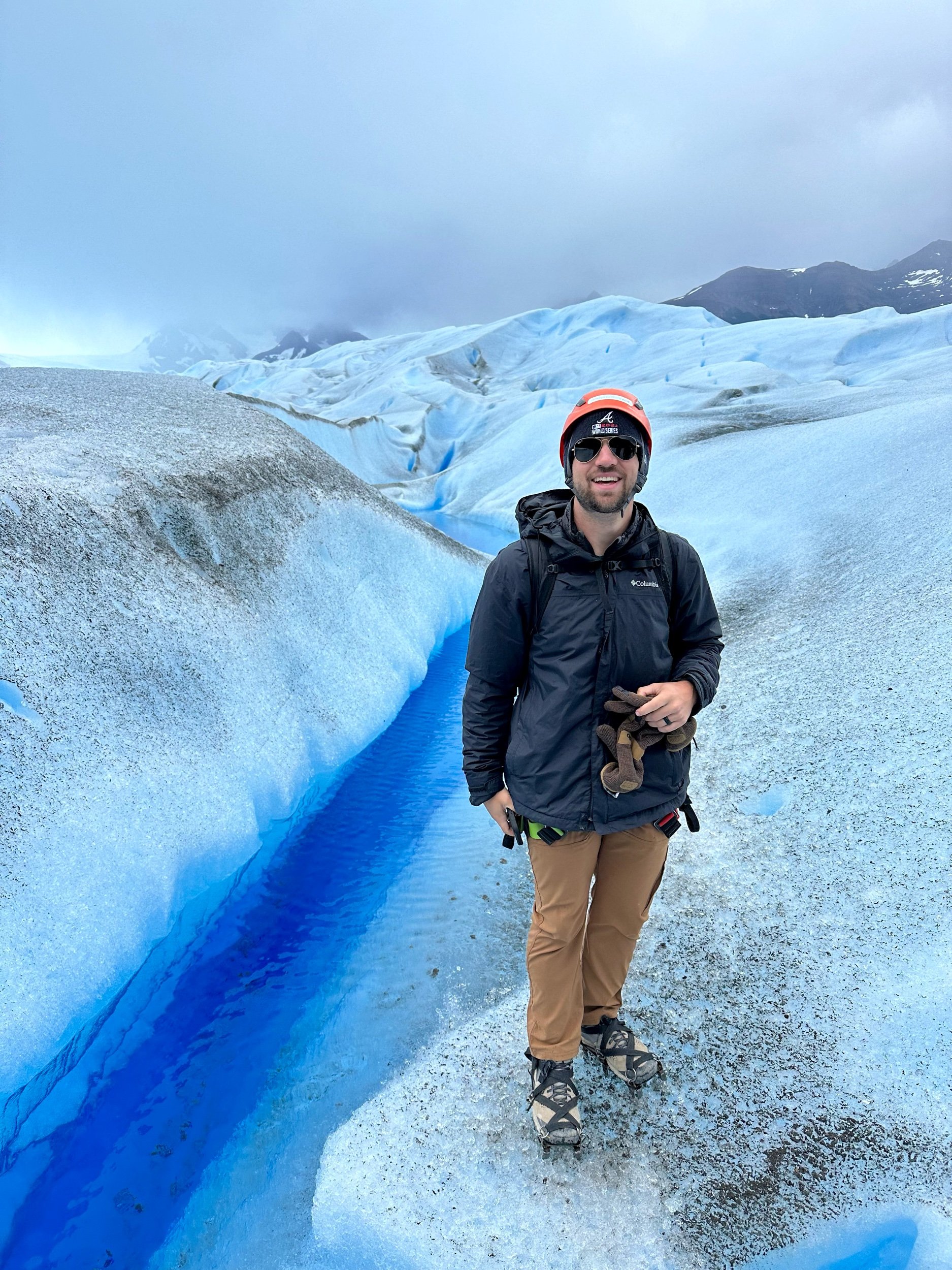
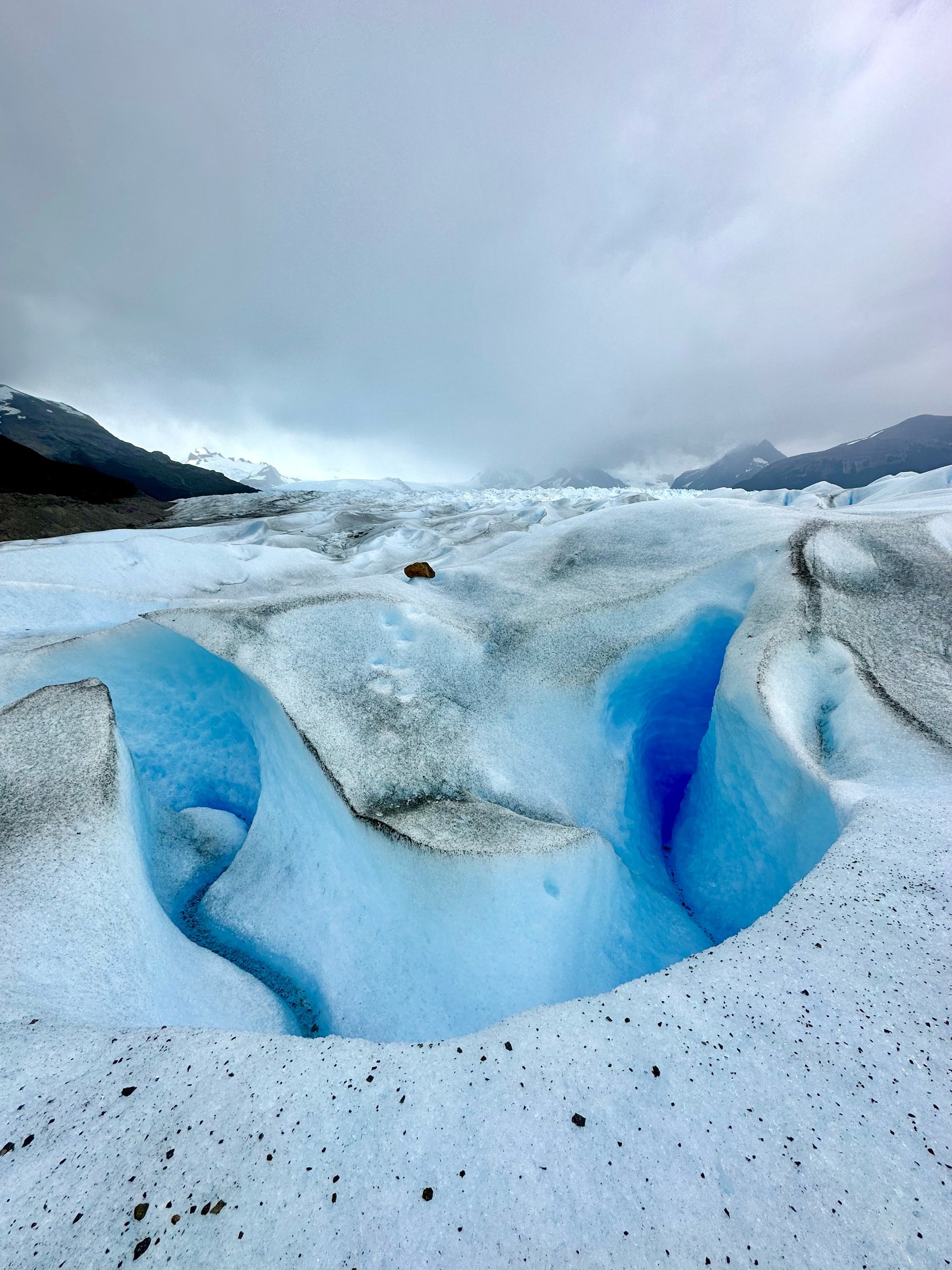
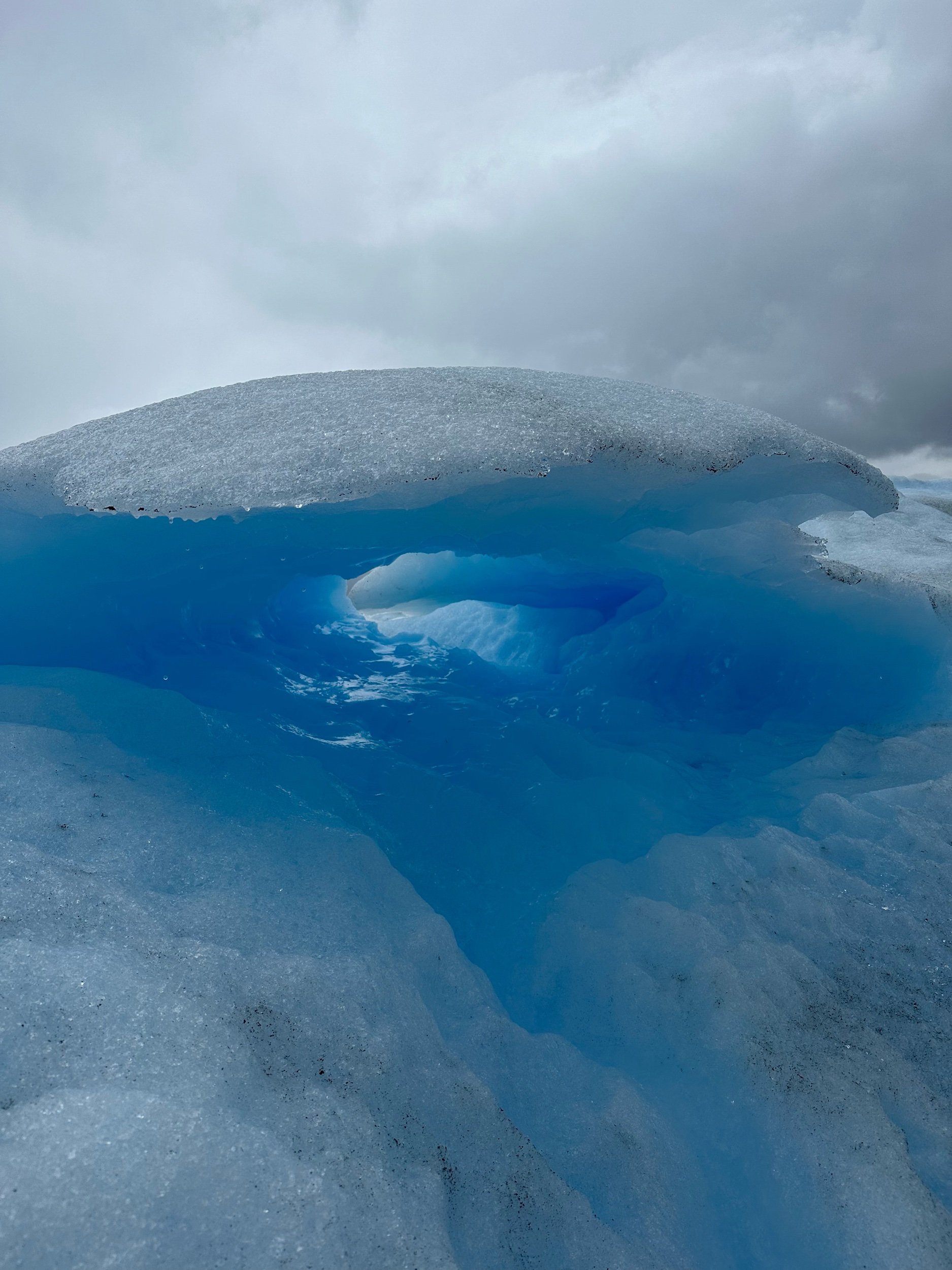
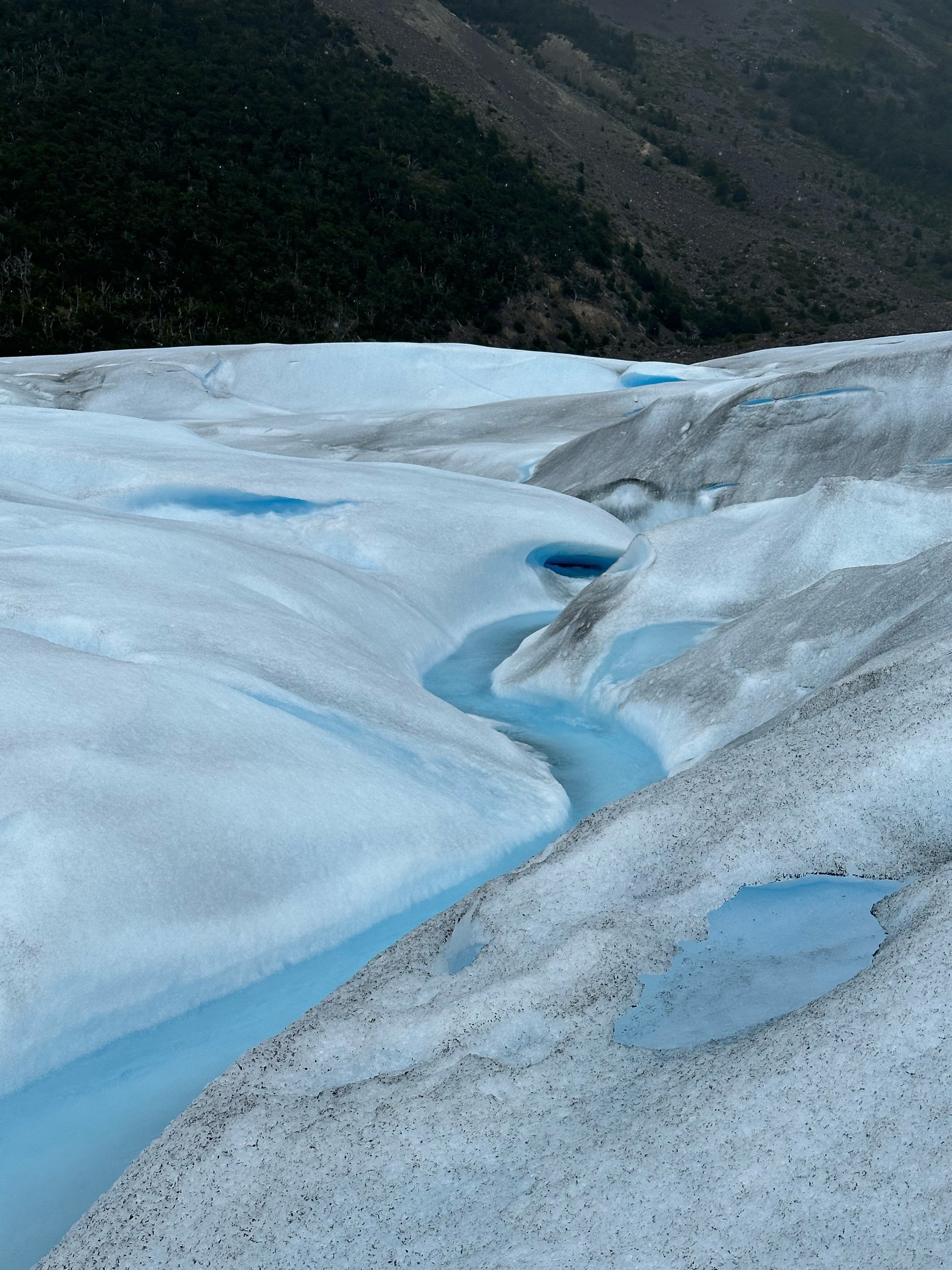
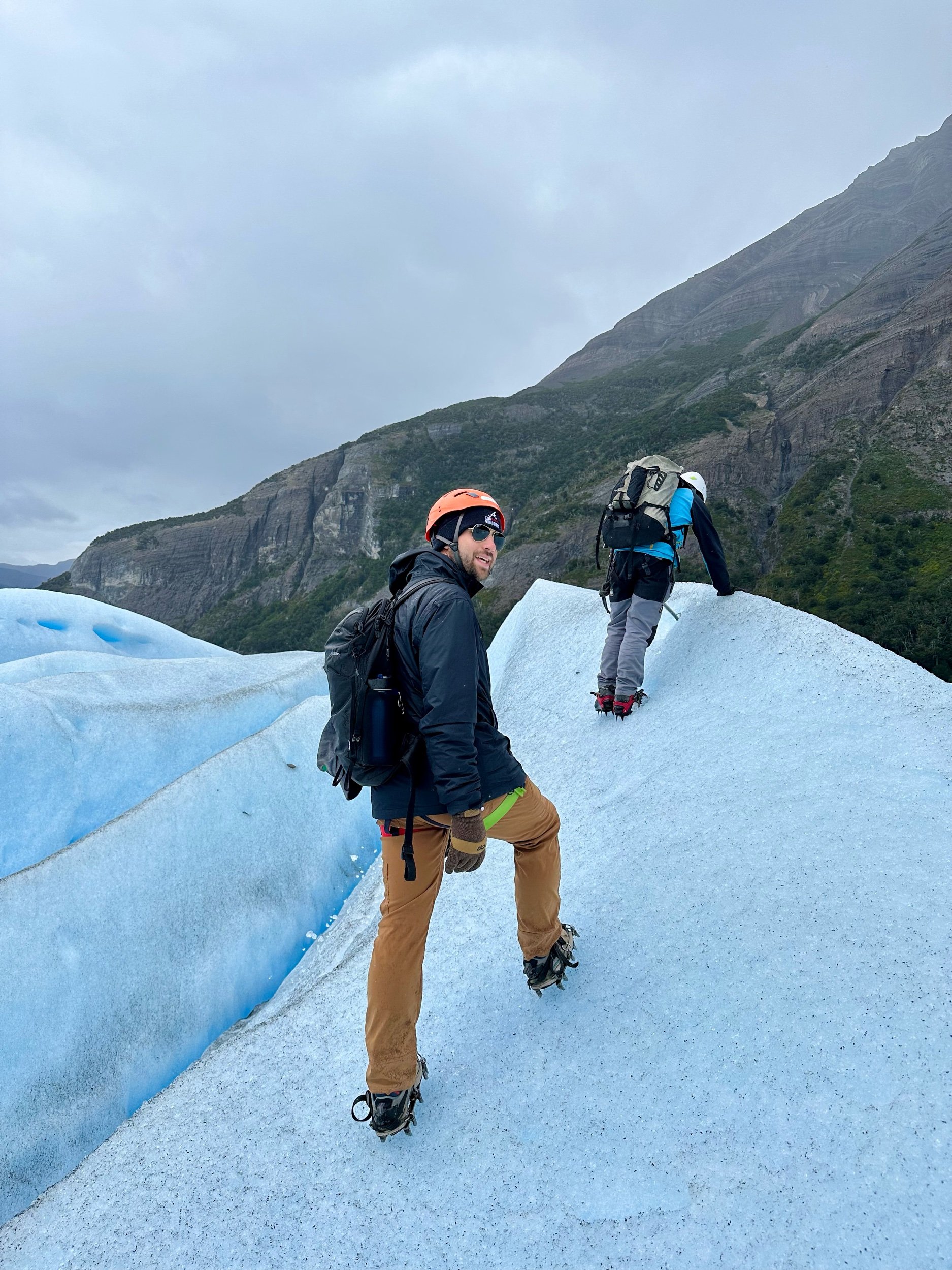
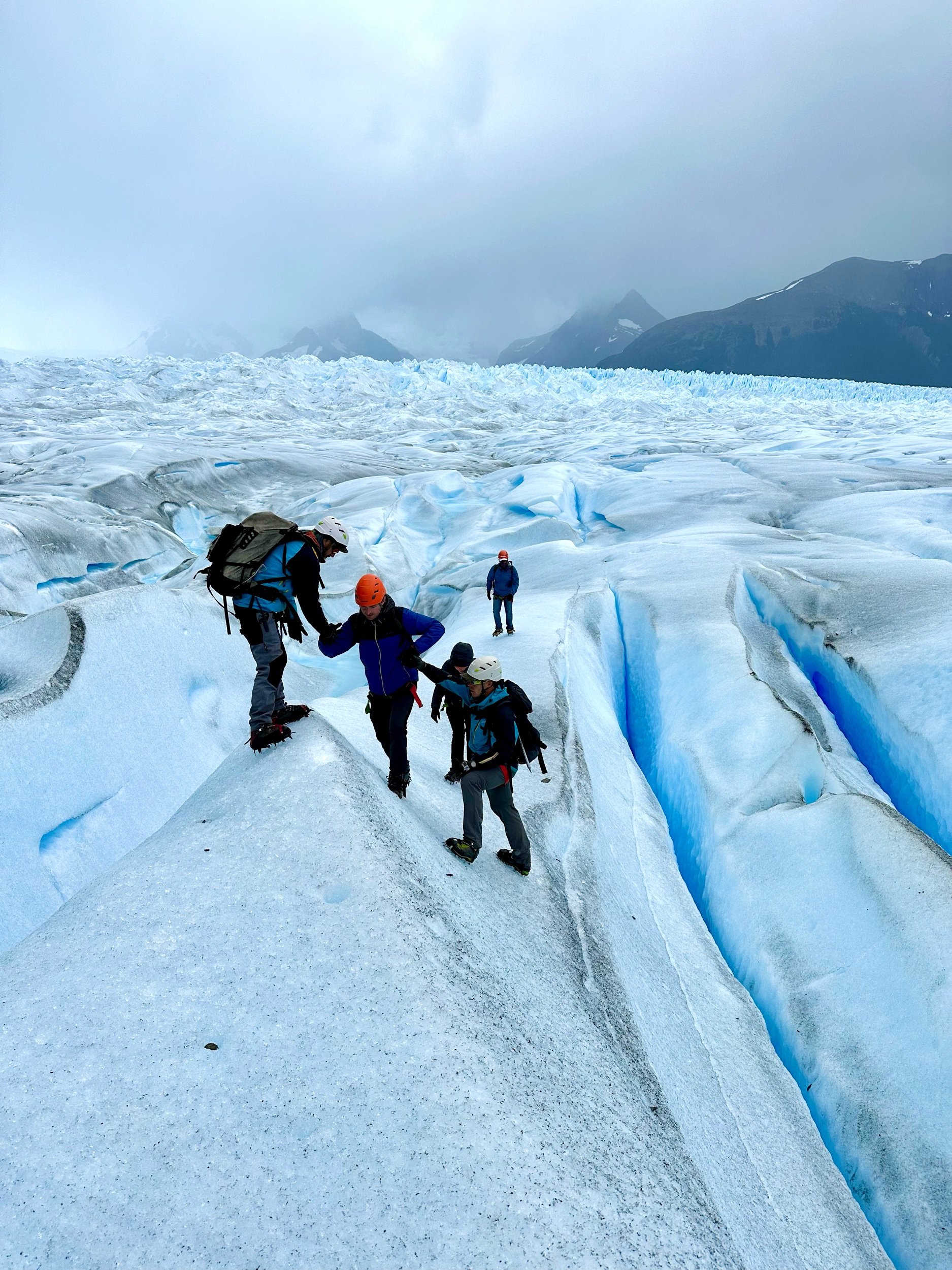
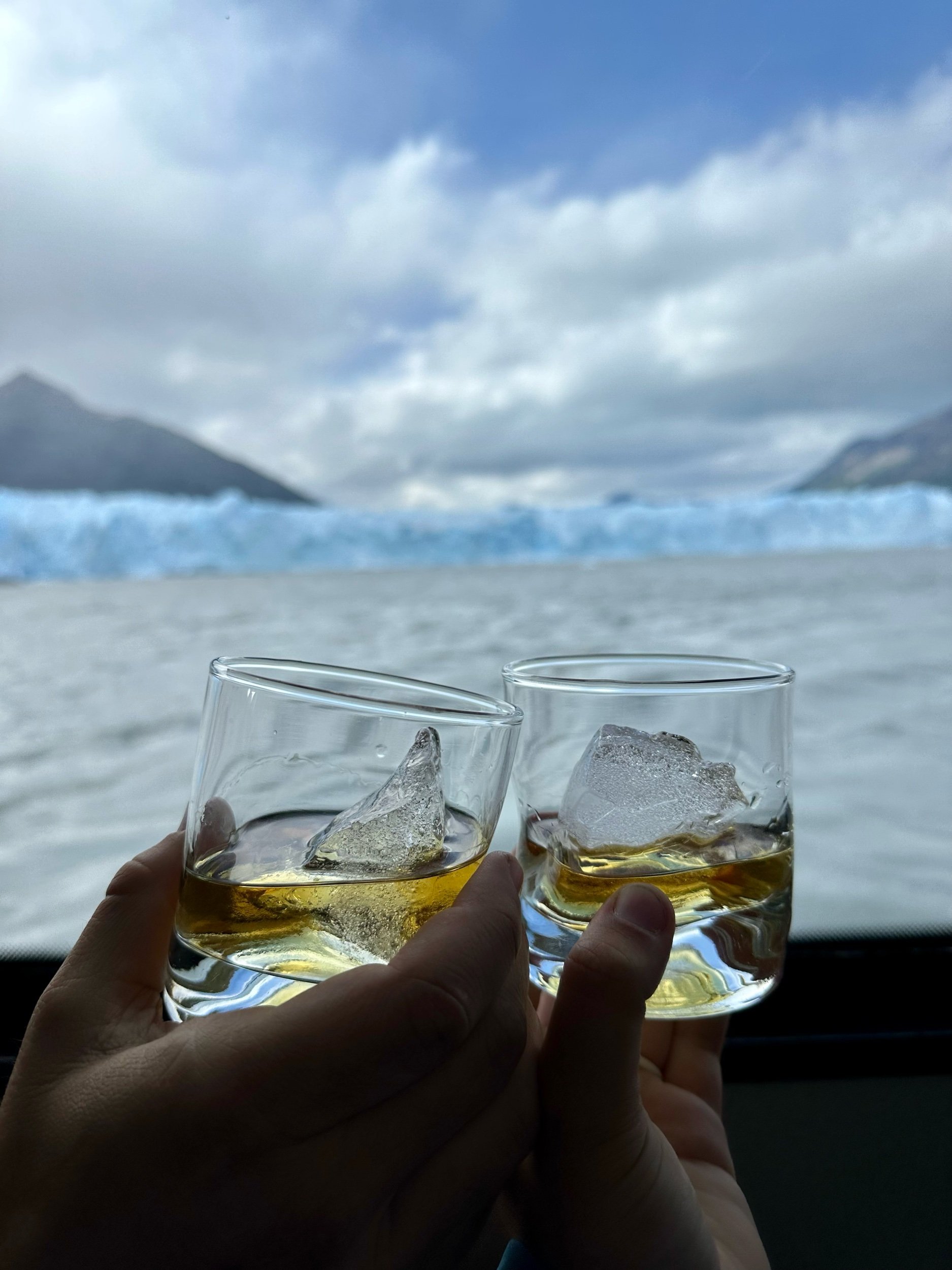
While the Perito Moreno Glacier is the main attraction of Calafate the town still had plenty to offer. El Calafate sits on Lago Argentina, the largest lake in the country, which was a beautiful emerald green color since it is mostly a product of glacier meltwater and has tons of minerals in it. On the other side of the lake from town is a massive mountain range with snow capped peaks. There is a nature preserve at the shore of the lake with walking and biking paths that provide great views of the lake and flamingos that live there.
The town itself had a really cool mountain aesthetic. There were tons of bars, breweries, cafes, and restaurants all along the main street. Most of the buildings were built like timber lodges; it felt just like being in a ski town. We stayed at a lovely hotel called Hotel Del Glacier and had an easy walk into town. We had some great meals in El Calafate as well, especially when we met up with some Australian friends we met on the W Trek at Parrilla Don Pichon, where we shared a grilled meat asado platter and some delicious veggies with sprawling views of the lake at sunset (sunset was at like 10pm because we were so far south still).

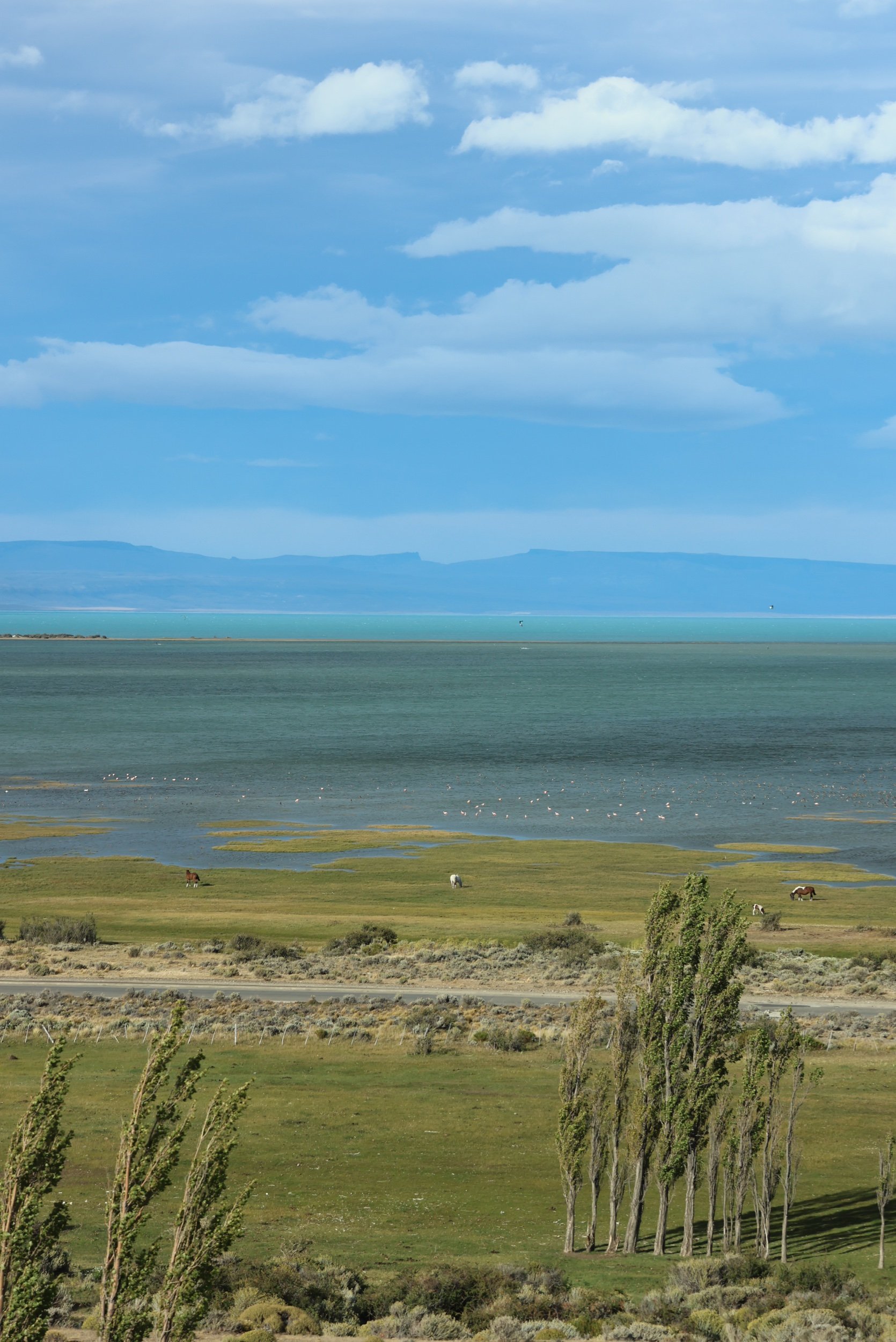
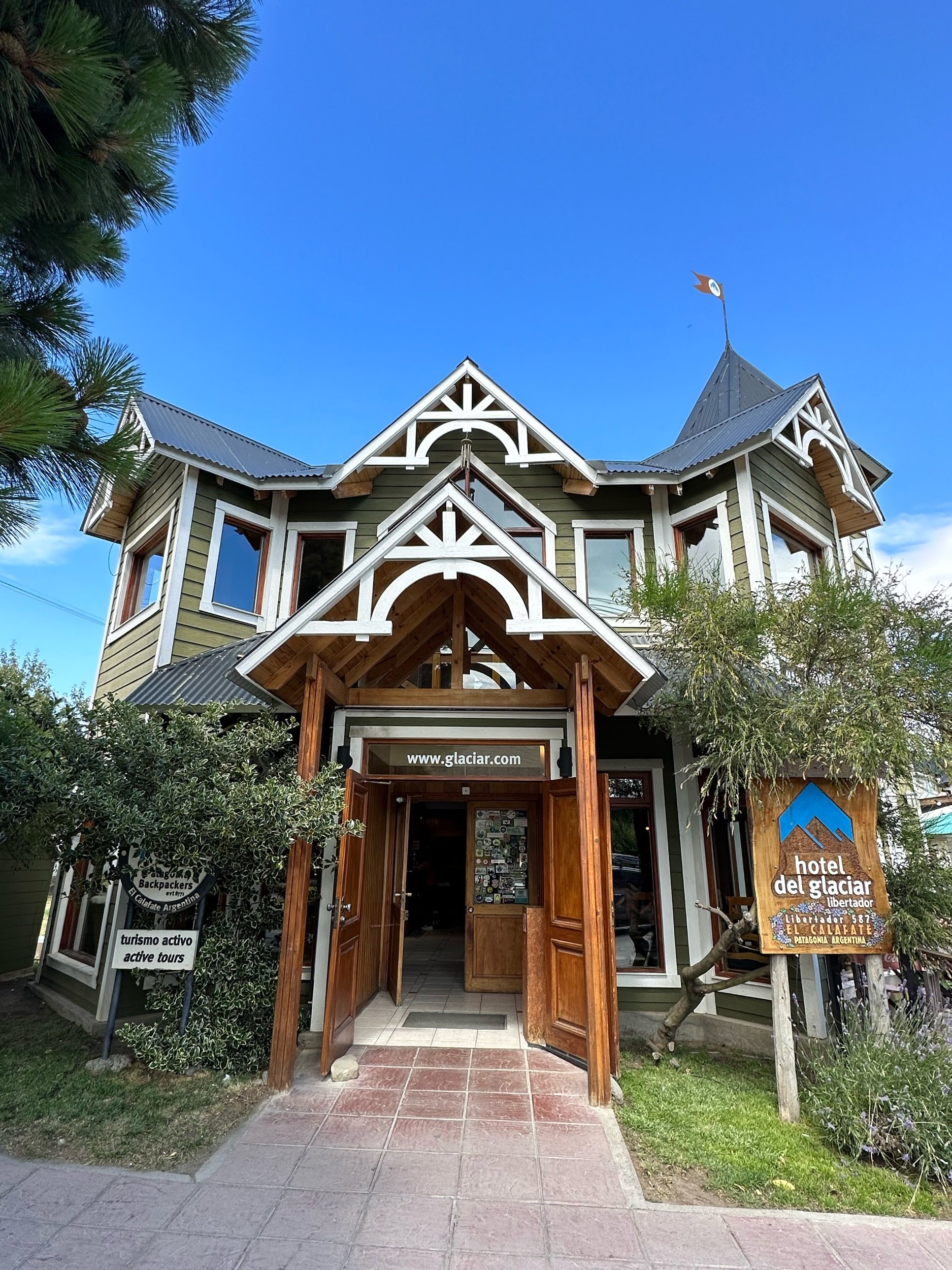

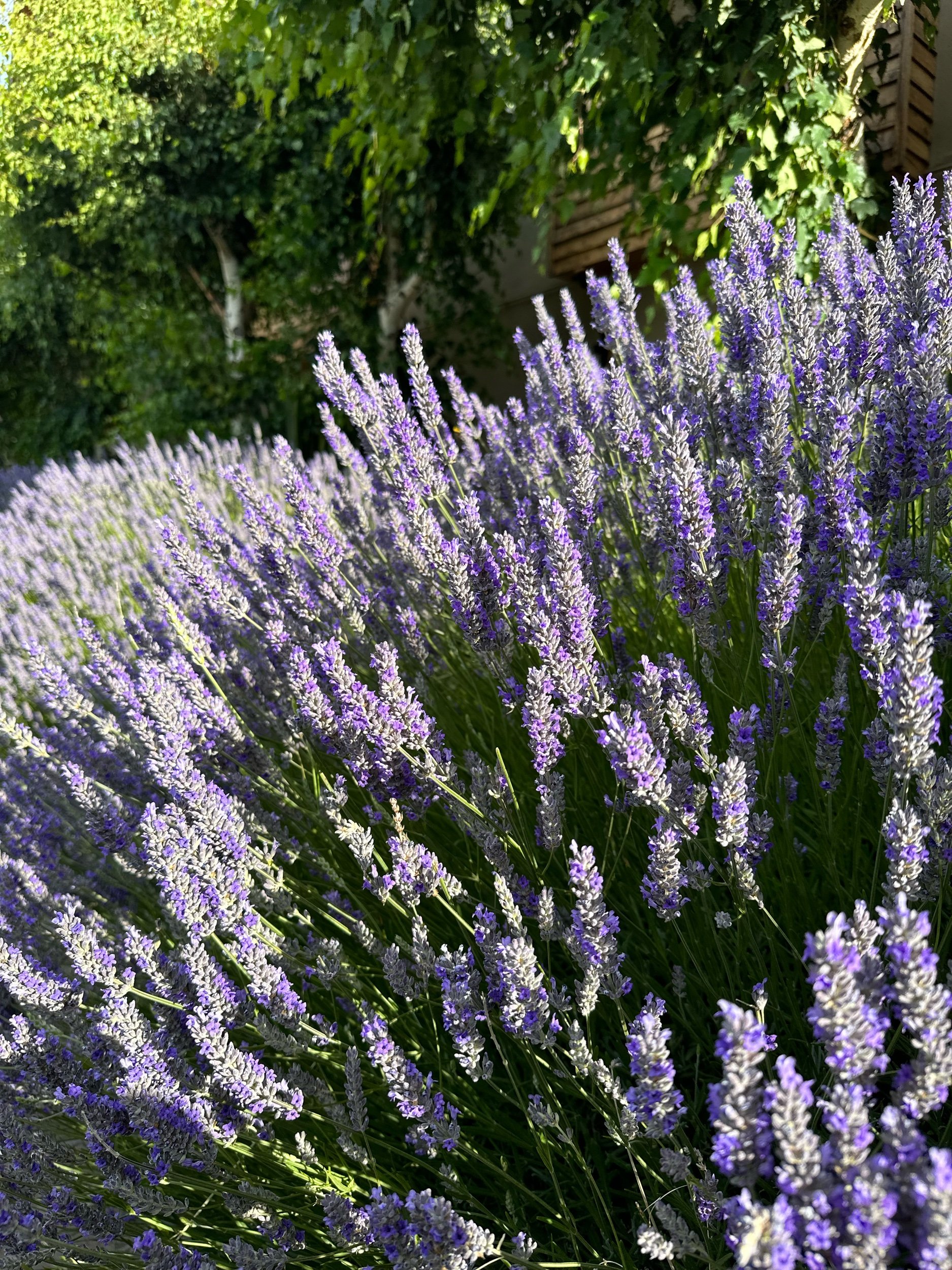
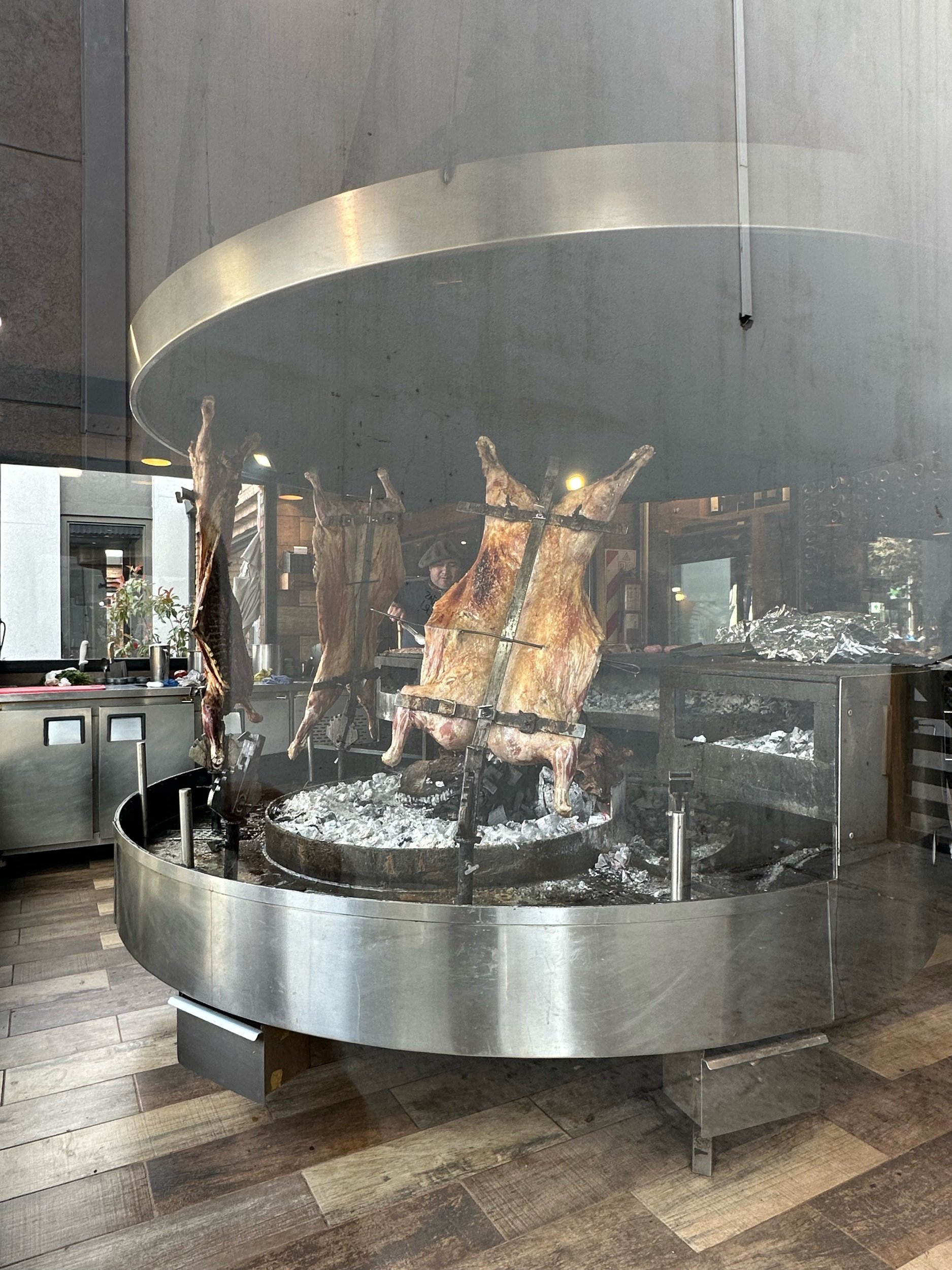

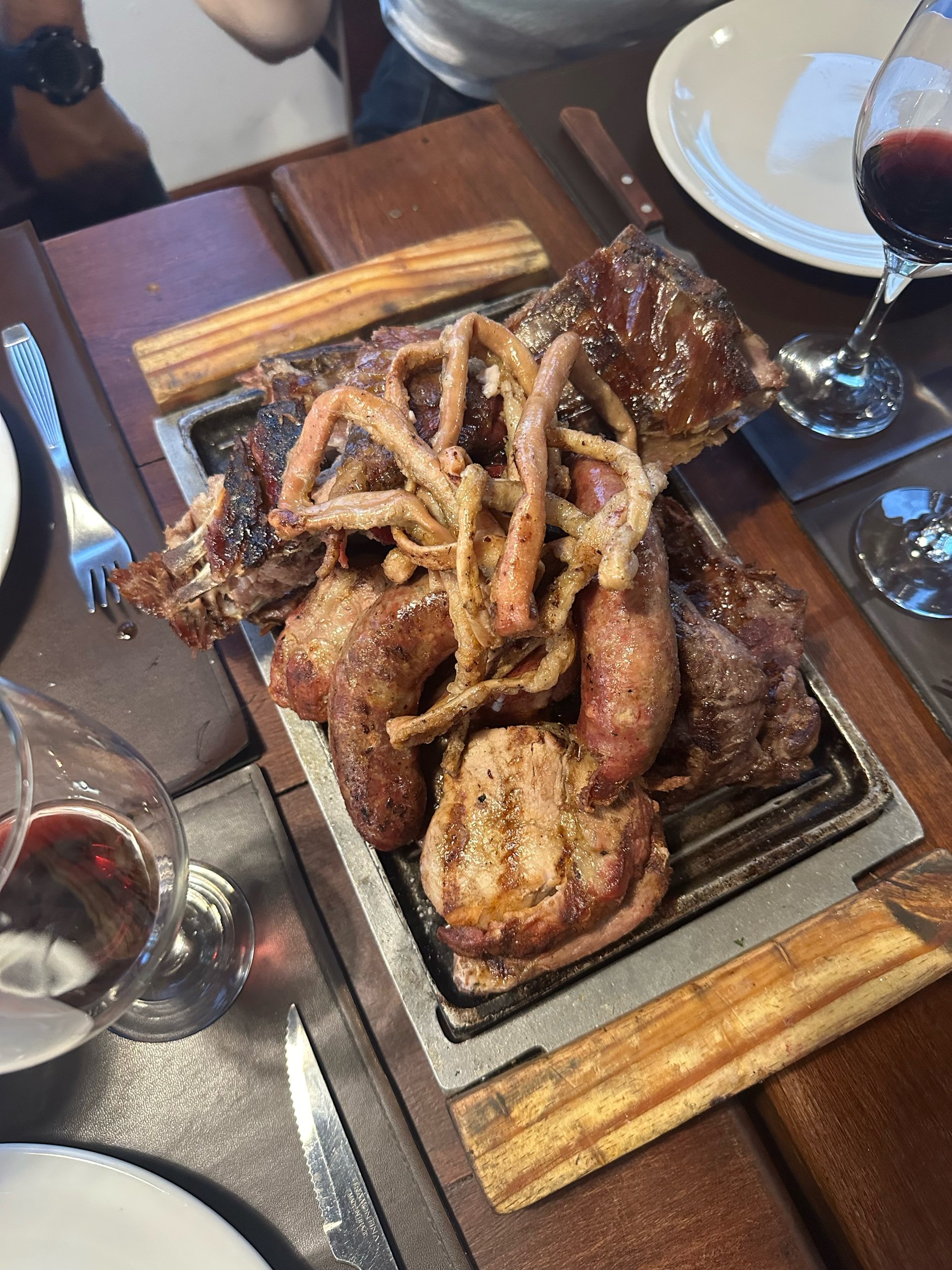
There was also a Glacier Museum that we were able to visit the day we arrived. We learned all about the process of how glaciers form, where they are located the world, the history of the Patagonia Ice Field, and saw a video showing the process of how the Perito Moreno Ice Bridge forms.

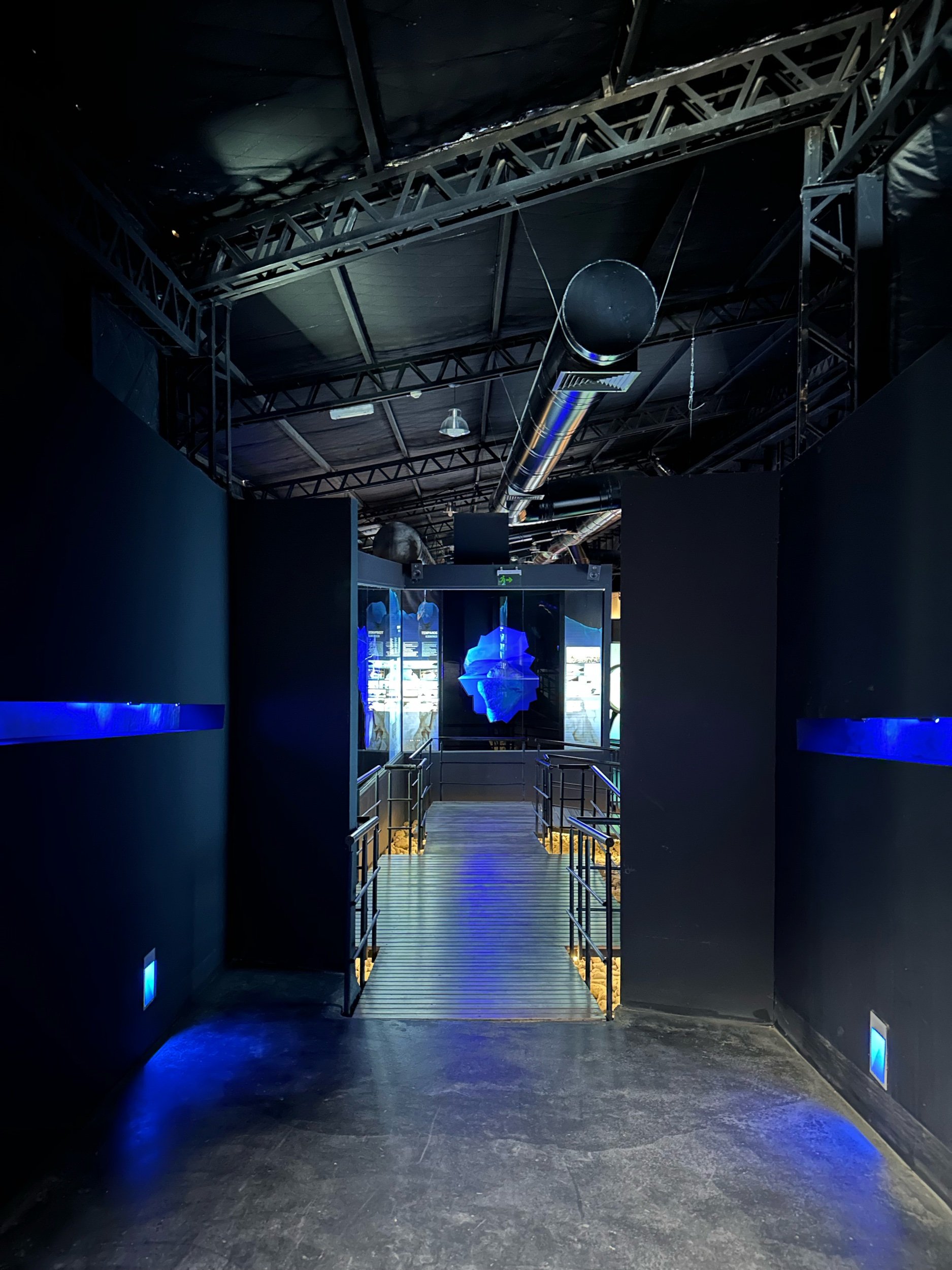

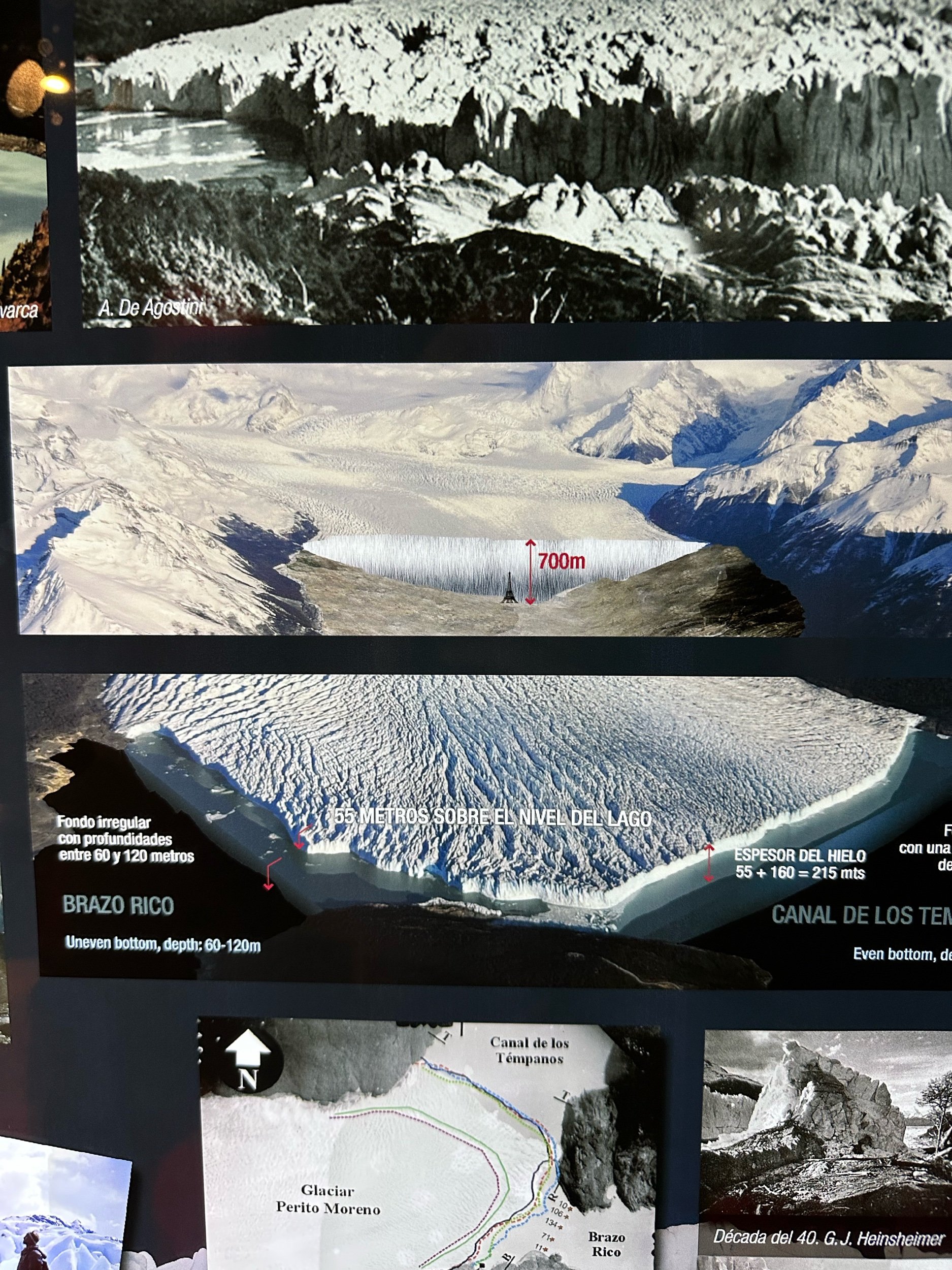
We absolutely loved our time in Calafate and are so glad we got to experience the raw size and beauty of the Perito Moreno Glacier up close. The landscapes of Calafate, the surrounding lake, and the mountains were incredible and we won’t be able to forget this place for a long time. Our next stop is the adventure and hiking town of El Chalten!
